Risk management planning is crucial in crafting a comprehensive risk management plan, ensuring your project is safeguarded against potential pitfalls. This article cuts through the noise to show you the essentials of risk management planning: identifying risks, analyzing potential impacts, and preparing strategies to handle them. Expect a step-by-step approach that is practical for project leaders who are serious about mastering risk management with clarity and ease.
Key Takeaways
- A risk management plan is comprehensive and includes key components such as a summary, definitions, approach, methodology, and scope, which outline the project’s objectives and risks ranging from legal to market issues.
- Effective risk management involves thorough risk identification using strategies like team brainstorming and expert consultation, regular risk assessments, creating checklists from past projects, and establishing risk categories with a structured breakdown.
- Crafting a risk response plan is critical, which includes assigning risk owners and developing mitigation and contingency strategies, along with continuous monitoring and updating of risk assessments throughout the project lifecycle.
Deciphering the Anatomy of a Risk Management Plan
A project’s risk management plan is critical and should include such key elements as an overview, definitions, approach, and methodology. The presence of these components helps to map out the way ahead as they help anticipate all possible obstacles during the project and provide requisite resources for navigating through them effectively. They are an essential tool that defines where one is headed in risk management. Integrated is a structured process for planning risks; stressing on steps and tools that manage and monitor risks in real-time. This process should be adjusted to meet the requirements in different industries and for different projects using real-time dashboards and customizable reports in order to improve the effectiveness of risk management planning.
The project risk management plan cannot succeed without certain essential conditions. These are thorough summary, clear definitions of project vane terms, well-articulated methodology for mitigating known risks and approaches towards possible elusion of those threats.
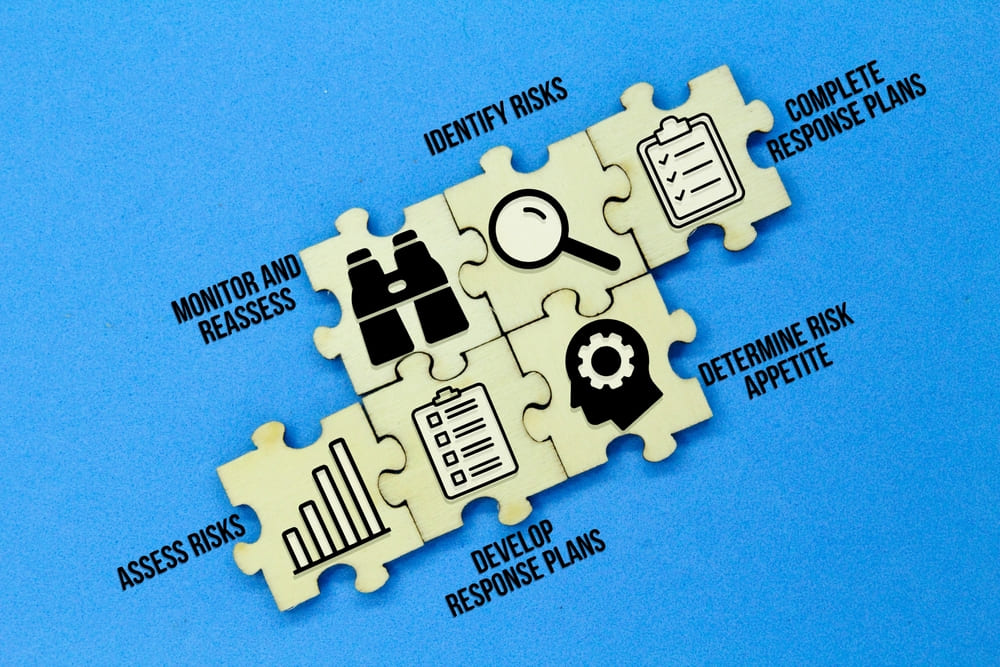
Defining the Scope of Risk Management
Managing the risks in a project without clearly stating the scope is like starting off on a journey whose destination is not known. This will be the compass that will lead the efforts for managing risks as it sets project objectives, controls the project’s boundaries and allocates resources effectively.
There are several elements that make up comprehensive enterprise-wide risk management scope including context and objectives, risks identification, potential risks analysis, and communications about them. Through this approach, the project manager is able to handle various types of threats such as legal or market risks. Just as assembling a puzzle requires carefulness, the process of creating the range for controlling hazards has different parts that must be accurately put together.
In conclusion, having a clearly defined scope for risk management is very important in any project. It makes possible for understanding and mitigating different kinds of unpredictable risks. The scope comprises essential areas like defining the context and objectives, identification of the risks, potential risk analysis, and communication on them.
This guarantees a comprehensive view of all issues affecting a project thereby enabling an effective delivery on set goals by managing effectively elusive challenges and changes that could confront it along the way.
Risk Categories and Breakdown Structure
Project management can be likened to the seven colors of the rainbow due to its wide array of risks. These include operational risks, strategic risks, project management risks, technical risks, external risks and organizational risks.
It is essential to understand these various types of risks so that they can be managed appropriately. Working on a huge problem without breaking it into smaller components may seem impossible. For instance, this is the place where Risk Breakdown Structures (RBS) become useful – with their help, all hazards associated with given projects get arranged in well-organized hierarchical tables thereby making them easily controllable.
The instrument does not merely assist in detection as well as evaluation any possible threats but also enhances team member participation in categorizing risks as well as decision making.
There are various risk breakdown structures used in different projects that help identify and assess potential hazards through involving all the team members during categorizing process for better decision making.
Further Reading: Risk Management: Ultimate Guide to Navigating Uncertainties
The Art of Risk Identification
Risk identification is like a treasure hunt, as this process demands a depth search of all possible sites in order to discover any hidden threats. Alternative approaches to risk identification consist of team brainstorming sessions, project management team member interviews, encouraging early risk assessment in the project, and risk assessment meetings.
Each detail regarding the management of projects and the teams that work on the projects should be considered when identifying possible risks. After the identification of risks, it’s important to analyze risk by assessing a potential impact and likelihood of each risk, focusing on data and risk metric collection, and documenting this process in the risk management plan.
Utilizing Checklists and Lessons from Past Projects
A listless shopping is difficult to do and often many things are forgotten to be purchased. Likewise, checklists are one of the important artifacts in project management to help in identification of possible risks, performance of required tasks, tracking progress and organization, and communication between the team members.
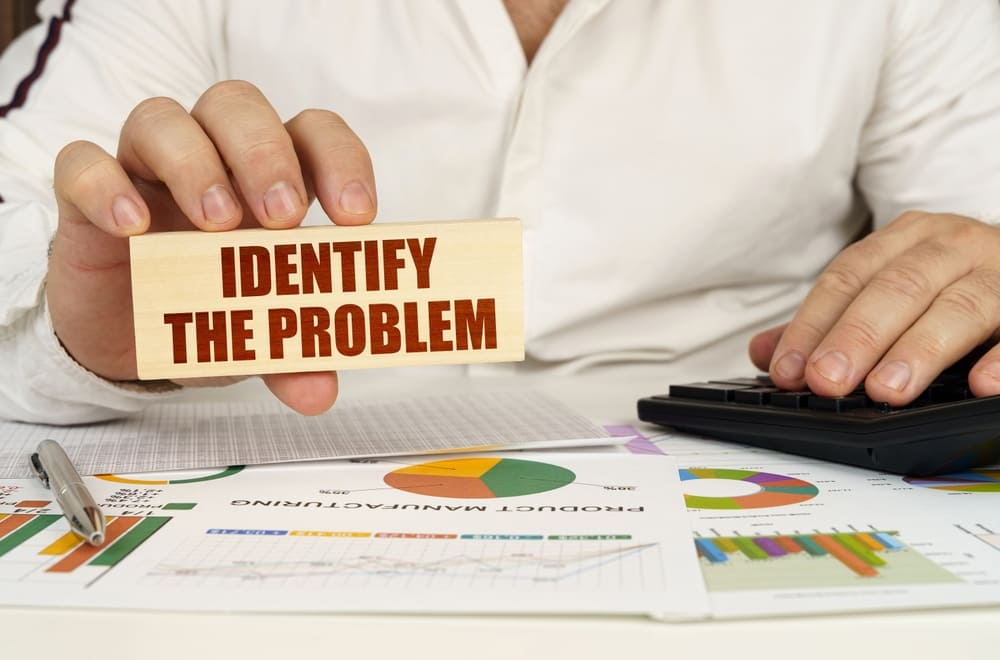
Good checklists are a product of teamwork and experience brought by successful projects. Through reviewing risk checklists that were employed in past similar projects and also considering lessons learned from previous endeavors, in order to help in identifying common risks that facilitate in making a checklist that mitigates those particular identified threats successively. This method not only makes you ready for present tasks, but also encompasses essential teachings from past ones.
Brainstorming and Expert Consultation
A brainstorming is a core part of risk identification that helps guide the project management teams. It promotes teamwork and brainstorming to discover possible risks that might have been missed otherwise. This way of thinking widens the understanding of risks.
Regarding brainstorming, an expert consultancy gives detailed advice on how to manage risks. These experts provide critical technical know-how and full comprehension of the associated opportunities and threats that are implicated in the project. Their points of view in creation of a comprehensive risk management strategy are essential, despite the fact that experts might have different opinion on certain aspects.
Conducting Thorough Risk Assessment
Once risks that are suspected are identified, project managers should conduct risk assessment as a part of a comprehensive risk analysis. The process involves assessing the probability and impact of each risk to assign its level of seriousness, as a doctor analyzes symptoms to understand the severity of an illness. Risk analysis also covers evaluation, analysis and risk response management throughout the project life cycle, providing project managers with risk managing tactics and contingency planning.
By conducting risk assessments and risk analysis, project managers are provided with information about the potential effect that each specific risk identified may have on their project. This helps them to rank these risks as per their perception of their potential impacts which in turn enhances their ability to control risks.
Establishing Risk Likelihood and Impact
Using two different views could be an image of considering the probability and potential impact of risks. The first risk category is the risk likelihood which is concerned with the probability of the risk event taking place. The second viewpoint, risk impact, concerns on how great destruction or disruption an event like that is capable of causing. For project managers, it is crucial to address both scopes, which will result in an accurate understanding of the potential effects of a given risk.
A chart which categorizes the level of probability and the level of impact of the identified risks is one of the effective methods for organizing and prioritizing them. When these factors are classified to levels (low, medium, risk), and plotted as such on this grid format, project managers can easily visualize which ones should be given priority.
Crafting the Risk Assessment Matrix
Just like having a map when navigating through an unfamiliar city, risk assessment is an indispensable part of good project management. The risk assessment matrix is a powerful tool for project managers in which they segregate or categorize risks by evaluating their probability and impact.
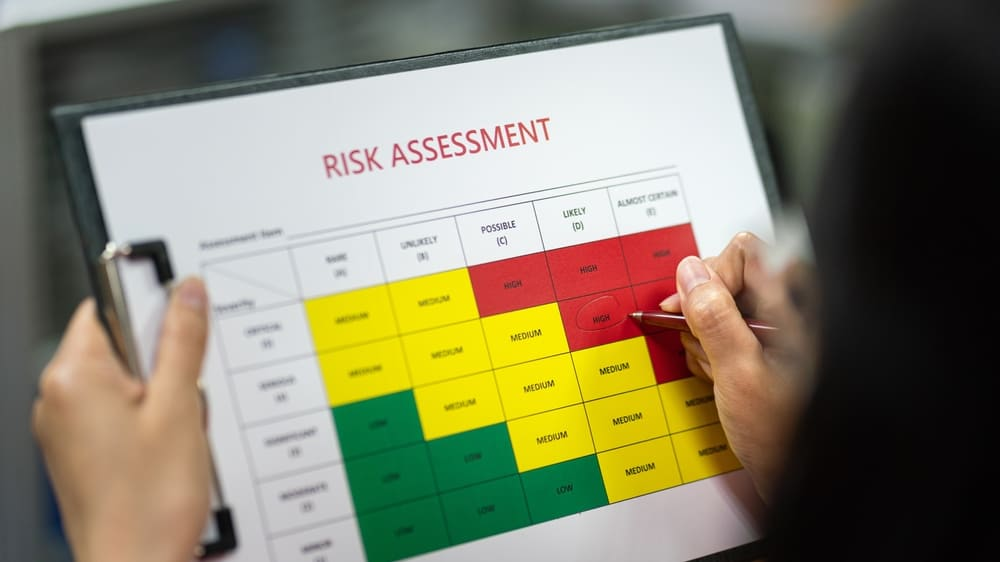
To develop a comprehensive risk assessment matrix, there are several steps to follow: rating every identified risk probability and severity, and then plotting them in the matrix, their overall impact score will be determined, and they will be prioritized to be managed. This approach enables visualization of various types of risks that is aimed at making them clear and easy to handle by project managers.
This process is difficult to implement in the absence of an outline in projects. Therefore, all parties involved- in particular project leaders- are to have such tools available to manage numerous initiatives successfully.
Formulating an Effective Risk Response Plan
Having identified and assessed potential risks, a response has to be formulated. The process can be compared to developing a treatment plan following diagnosis. It consists in identifying the owners of risks and developing measures for both mitigating and contingency so even if the threats are realized the project can continue as planned.
Assigning Risk Owners
Similar to the fact that each player of a football team has a defined position, in the context of risk management, setting risk owners points provides clear responsibility points for identification and treatment of specific risks. Risk owners play a critical role of ensuring that all efforts aimed at minimizing and resolving risks are strategically coordinated.
In addition to their participation in planning the responses to possible risks, the risk owners are also charged with the responsibility of monitoring existing risks and executing suitable response plans. More so, this creates an accountability and guarantee that all identified risks are well managed.
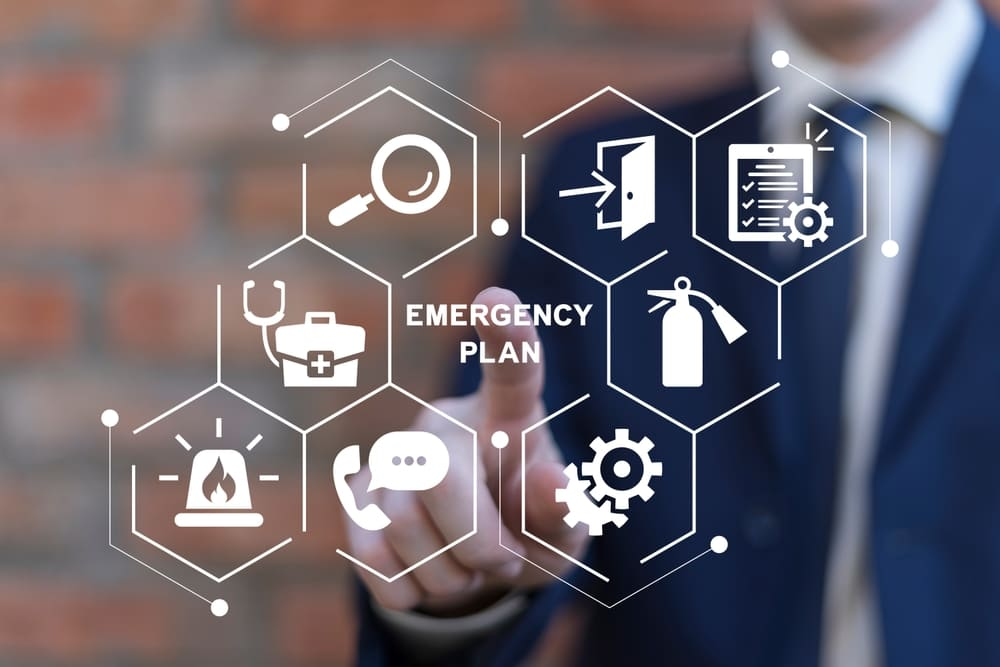
Developing Mitigation and Contingency Strategies
After risk owners have been identified, the second stage is risk reduction and contingency planning. Risk mitigation looks at avoiding or reducing the effects of risks while contingency planning is based on the readiness of and response to the realized risks. They serve as safety nets, allowing a project not to stop if a surprise occurs.
The main elements of a risk response plan are effective development of different mitigation strategies that include avoidance, reduction, transference, and acceptance. The objective is to develop a method which minimizes the effect of the set-aside risks through their acceptance, avoidance, and/or control if feasible. Or shifting the duty of managing such risks to some other entity.
To mitigate potential risks associated with time frame issues in a project, one must not just identify but also implement relevant measures through detailed response plans. The main steps revolve around the prediction of different possibilities allowing the elimination of the adverse effects, concerned with some uncertainties.
These steps can mean encountering the related harm directly, bypassing the issue itself, keeping insignificant control of future events, and delegating decision-making responsibilities to other parties where required.
Monitoring Risks and Tracking Progress
Risk management is not a one-time task; rather it is an effort that needs ongoing and oftentimes tracking of progress throughout the life of a project. This enables project managers to quickly respond to the changes and keep the course of the project.
Implementing Risk Tracking Systems
Project management with no risk tracking system is like running a race with a blindfold on. The implementation of a risk tracking system enables the ongoing control of project risks as well as facilitates decision-making and avoidance of probable problems.
The implementation of a risk tracking system in project management involves the development of a risk register to monitor identified risks and to assess their likelihood and impact, defining risk owners and risk response plans. This risk register is essential for continued risk management and for the success of the project.
It ensures that the project remains on track by providing immediate insight as to any possible challenges that may appear during its life cycle. It also facilitates the prescription of preventive measures for such risks.

Reviewing and Updating Risk Assessments
Just as a car, risk assessments also require routine reviews and revisions to remain efficient. Project managers are advised to review and update their risk assessment at least once a year or when there are major changes in the project.
The assessment of risks may need to be revised due to elements like legislative alterations, project related improvements as well as planned annual evaluations. By conducting systematic reviews and periodic updates of their risk assessment, the project managers can keep their organizations prepared to face eventual risks throughout the course of their projects.
Choosing the Right Tools for Project Risk Management
Just like a chef requires the proper tools to craft delicious dishes, project managers also need suitable resources for successful risk management. These crucial instruments include software programs and documents such as risk assessment matrices and registers which establish a thorough framework for efficient handling of risks in projects.
Software Solutions for Risk Management
In the digital age of today, software solutions provide a smart and quick way of dealing with project risks. This suite of tools offers many features including real-time risk tracking, single event management, brainstorming facilities, the root cause analysis, and risk assessment support. Through inclusion of these aspects in the risk management process, informed decision-making is promoted.
Some of the top-rated software solutions for project risk management include ProProfs Project Management Software (PPMS), and the RAIDLOG.com platform. In addition, ClickUp productivity tool, these tools assist project managers in identifying potential risks and assess their influence on operations. They play a critical role in ensuring that projects keep running as planned and fulfill their objectives without significant disturbances due to unexpected events or uncertainties.
Tools of project risk management help a lot in solving challenges and preventing negative influence brought by different factors. No matter whether it is an unstable market situation or unplanned fails in the process of the project fulfillment, risk tracking helps to track threats until they are eliminated by the ways of preventing and avoiding them. In addition, the capability of managing each particular event separately helps them to deal with the problems instantly before it becomes a disaster.
Further Reading: Best Alternatives Of Microsoft Project: For Streamlined Project Management In 2024
In addition, it enables team working through brainstorming sessions, where ideas can be aired, and root cause analysis activities, to establish the true root causes. It is clear that the complete approach offered by such technology increases efficiency of the entire risk management process. And this results in improved results for any single project outcome.
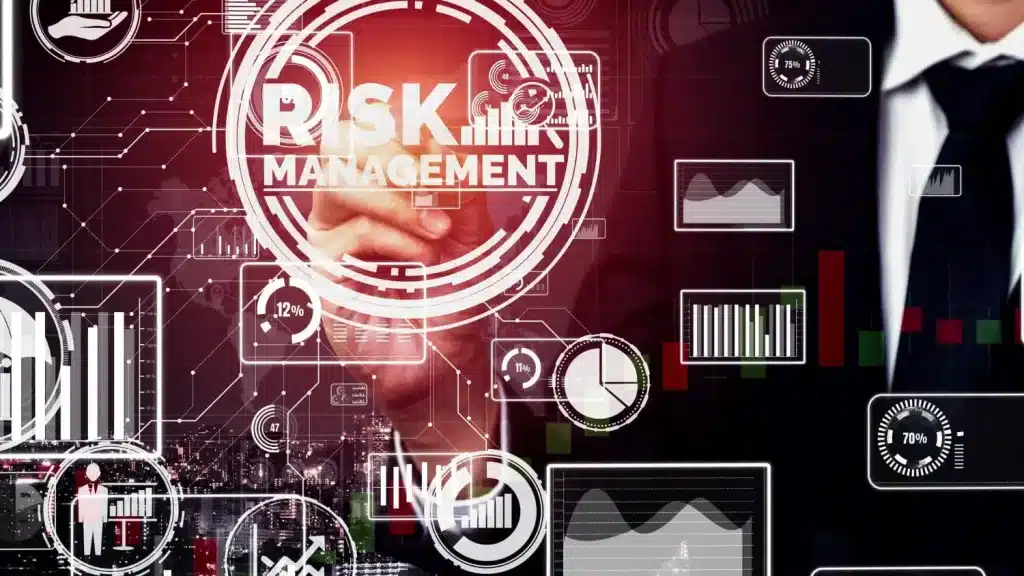
Integrating Risk Management into Project Lifecycle
In the life cycle of a project, this is not the case and risk management is not a separate task, but an integral part in all stages. Consistency in identification, evaluation, and control of potential risks must be maintained from planning through to the execution of the project. This method guarantees that the risk at any stage is properly controlled.
Risk Considerations in Project Planning and Execution
Risk management has a great impact on project planning. If the project managers spot such risks in time, they can craft plans to manage them, thus, enabling the project to move into the right direction to meet its intended goals.
Risk management is important even at project implementation. Continuous risk monitoring and management enable project managers to ensure that their projects do not go off the course and are able to adjust to any unforeseen contingencies.
Tailoring Your Plan for More Complex Projects
The importance of a robust, flexible risk management plan increases as the project gets more complex. They need advanced approaches that can be dynamic with uncertainties and changing conditions to manage risks well. Managers have to be ready with dynamic responses to the higher level of uncertainties that emerge during challenging projects.
Summary
Risks addressing in project management is a difficult task, which includes a set of measures contributing to the project success. It begins by listing potential risks that can threaten the objectives of the projects, then evaluating the likelihood and the magnitude of each risk. Consequently, a risk response plan is created to deal with these risks in a proper manner.
Project managers should also adhere strictly to these guidelines and use the suitable risk management measures from initiation to the close of the project. Through this, they can respond-management resultant risks and take informed decisions to save the project’s performance. Also, continuous risk monitoring is the most vital for identification of the new threats and for the adjustment of the response plan to the risks. Such a reactive approach enables project managers to react to emerging challenges without interruptions of the continuity of their projects.
Frequently Asked Questions
What is included in a risk management plan?
Financial resources, methods, and strategies are outlined in a risk management plan to help identify, evaluate, reduce or eliminate risks in a project. It also involves the project itself and the ways in which the team will identify and assess risks through different methods. The plan also includes monitoring tasks for continual assessment of risks throughout the course of the project.
What are the 5 steps to a risk management plan?
A risk management plan follows a structured approach consisting of five key steps: identification, assessment, discernment, treatment and surveillance. This approach endeavors to effectively deal with and eliminate all possible risks that may occur in any situation. In so doing, the stages that are gone through systematically aim at effectively managing uncertainties or threats within an organization or project.
How do you document a risk management plan?
In documenting a risk management plan, you choose to outline the steps such include risk identification, assessments, response plan creation, assigning risk owners, understanding triggers, a backup plan creation, measuring risk threshold, and tracking and monitoring risks in real time.
It includes project description, risk identification, and assessment procedures in the plan.
What is the role of a risk assessment matrix in project management?
A risk assessment matrix is an essential tool in project management because it helps project managers in identifying and classifying potential risks that are expected in a project. This tool allows the assessment of chances and effect of each risk; thus, it is a tool that supports good decisions and makes risk management processes to be efficient.
What is the significance of assigning a risk owner in risk management?
The risk owner is vital in the practice of risk management. This person is tasked with the duty of recognizing, assessing and mitigating risks that are associated with a project. In this way, the decision-making processes are simplified and the responsibility is obviously identified for the control of all forms of risks that are likely to occur.


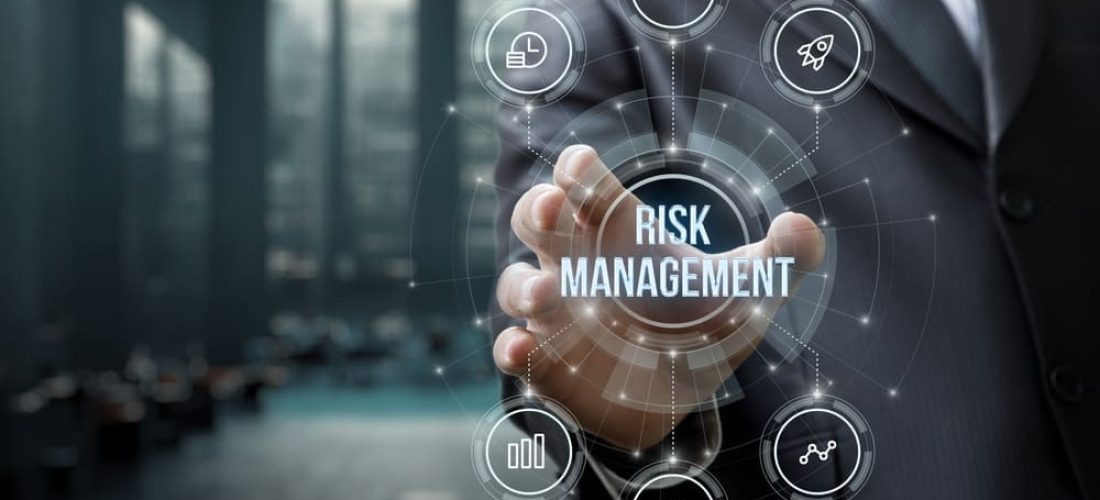
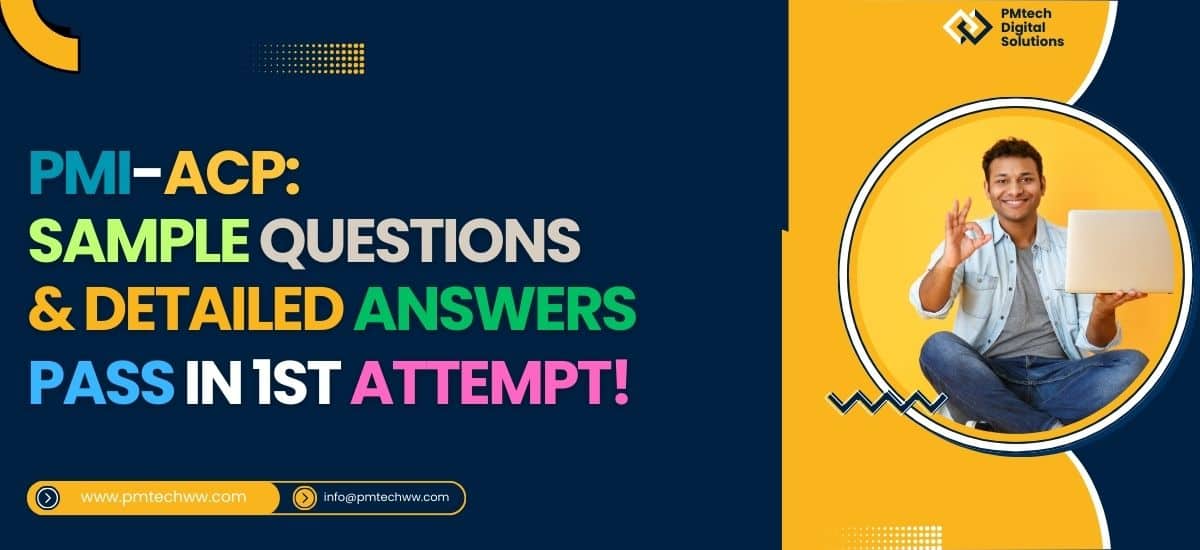

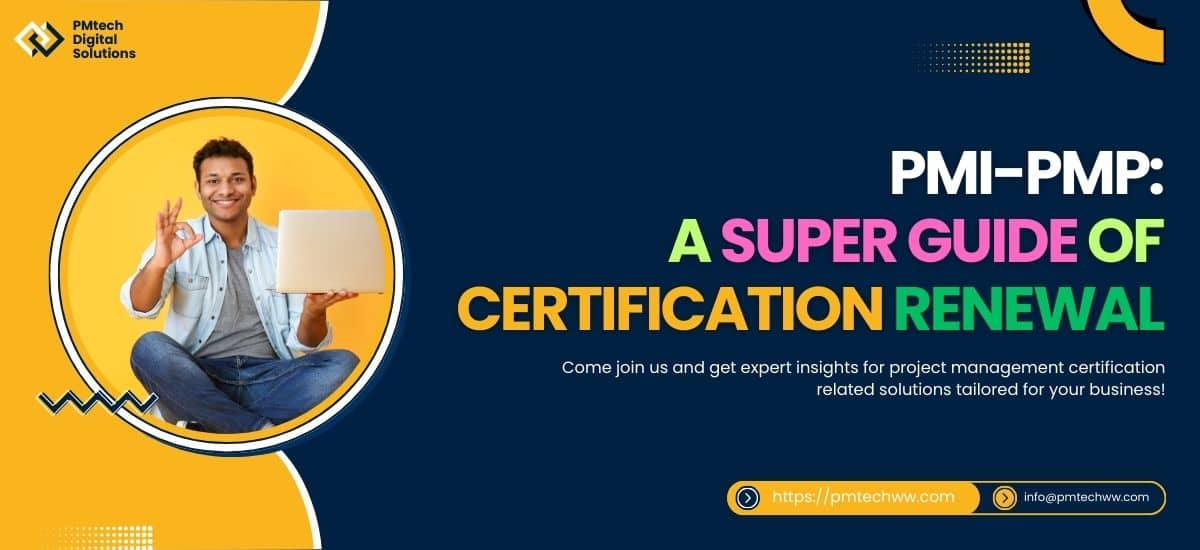
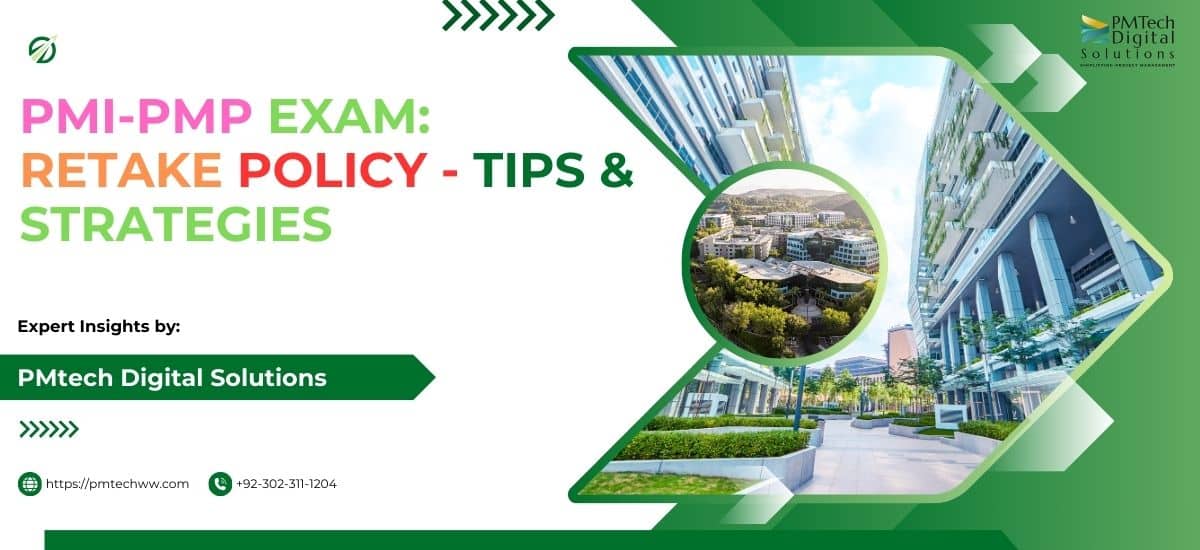
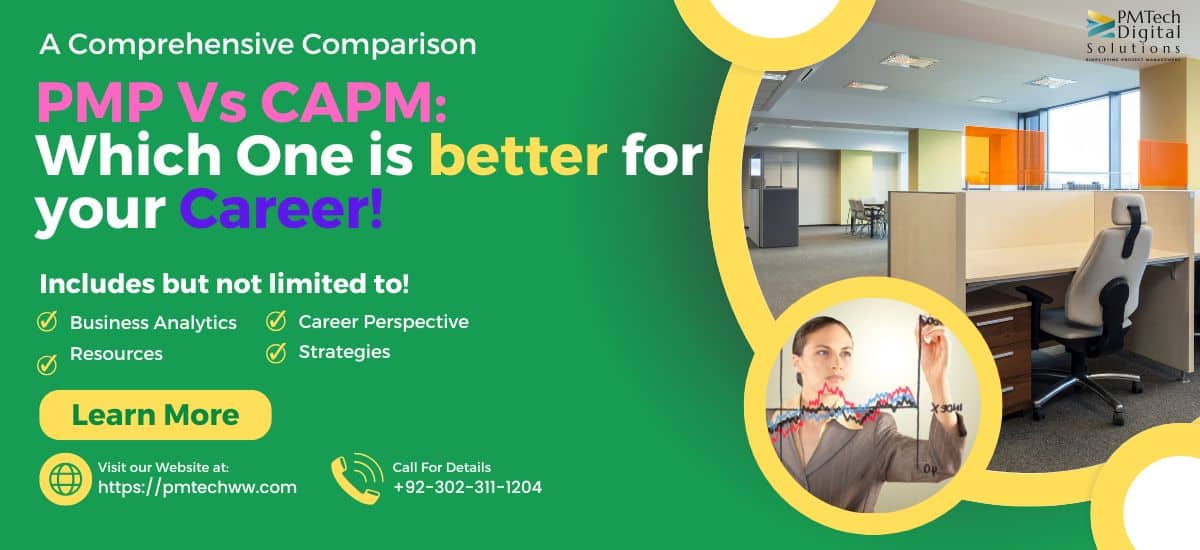



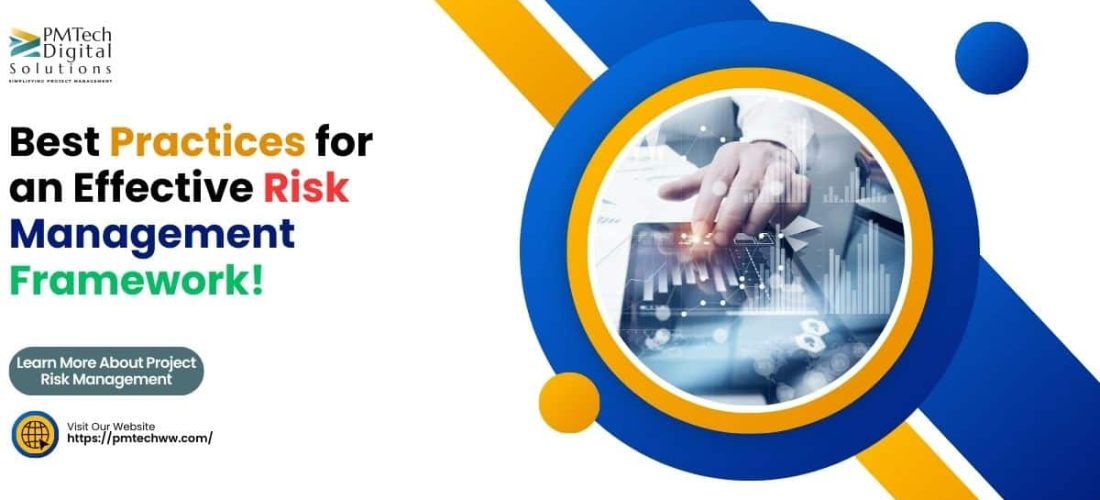


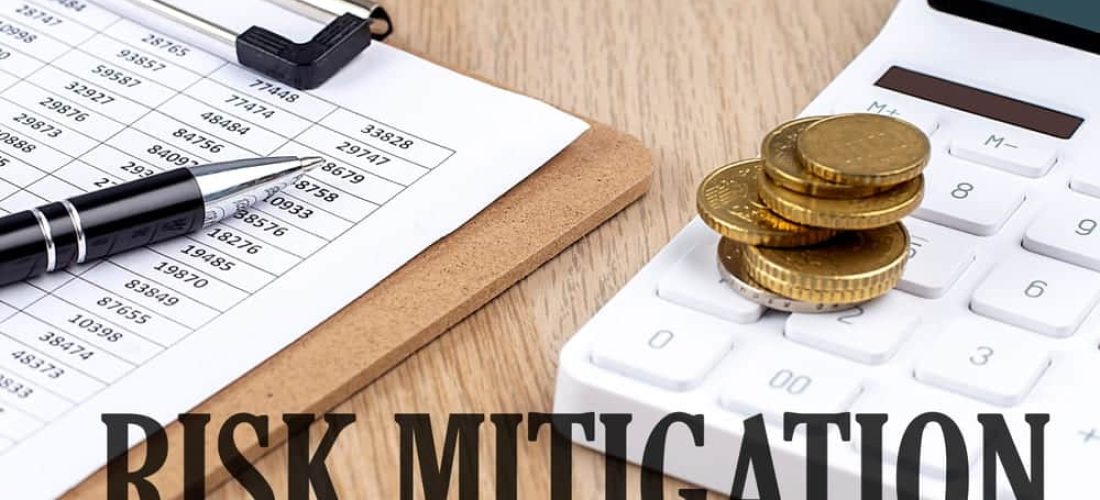
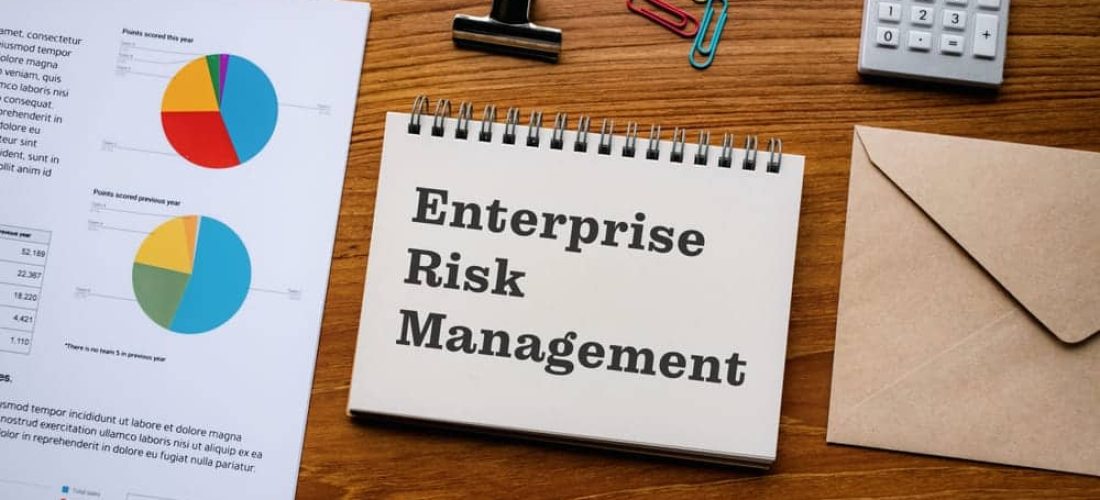
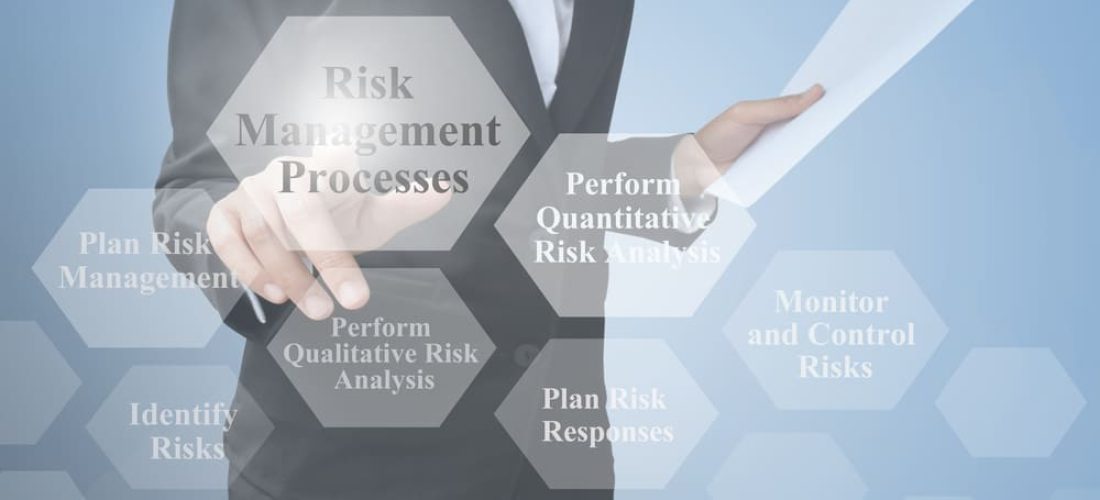
896 Responses
Your point of view caught my eye and was very interesting. Thanks. I have a question for you.
https://api.lioleo.edu.vn/public/images/skills/4.png.php?id=puncak88-bet
Novo usuário na [peixe beta](https://peixe-beta.com)? Ao se registrar, você ganha um bônus de US$ 100! O processo de login é fácil e rápido, permitindo que você comece a jogar em poucos minutos. Aproveite essa oferta exclusiva e explore os jogos emocionantes da plataforma.
https://lioleo.edu.vn/dang-ky-form/4.png.php?id=apk-bet-365
https://lioleo.edu.vn/christmas-section/4.png.php?id=ug-bet-slot
Baixe o Aplicativo [fuwin](https://www.fuwin-br.com) Agora e Tenha o Melhor Jogo de Cassino no Seu Smartphone
A [betcris](https://betcris-br.com) oferece uma ampla variedade de jogos populares, sempre em uma plataforma justa e transparente. E para garantir que seus jogadores tenham mais chances de sucesso, a plataforma oferece bônus generosos que tornam a experiência de apostas ainda mais emocionante e recompensadora.
A pixbet é um cassino online de confiança, com jogos populares e uma plataforma justa para todos os jogadores. E para deixar sua experiência ainda mais incrível, a plataforma oferece bônus vantajosos que aumentam suas chances de ganhar e fazem a diversão durar mais tempo.
Baixe o Aplicativo [fezbet](https://fezbet-88.com) Agora e Aproveite a Melhor Otimização de Interface Para Jogos no Celular
12bet – https://12bet-vn.com – Trải Nghiệm Cờ Bạc Công Bằng, Nhiều Khuyến Mãi Hấp Dẫn
O aplicativo [7755 bet](https://7755-bet.com) foi desenvolvido para oferecer aos jogadores a melhor experiência de cassino online. A interface foi otimizada para ser extremamente intuitiva, garantindo que você possa navegar pelos jogos e opções com facilidade. Baixar o app é simples e pode ser feito diretamente no site oficial, para Android ou iOS. Além disso, a plataforma foi projetada para funcionar perfeitamente em diferentes dispositivos, sem falhas, proporcionando uma jogabilidade fluida e emocionante a qualquer hora e em qualquer lugar.
Soluções Imediatas no [fezbet](https://www.fezbet-br.com): Atendimento ao Cliente Online 24 Horas!
Win Big and Play Fair with heyspin – https://heyspin-in.com’s Popular Gambling Games and Rewards
Ganhe 100$ de Bônus no [poker online](https://pokeronline-br.com) ao Criar Sua Conta!
Baixar o aplicativo [888](https://888-br.com) é o primeiro passo para aproveitar ao máximo sua experiência de cassino online. O processo de instalação é simples, e o app foi otimizado para garantir uma navegação fluida e sem falhas. Com uma interface fácil de usar e excelente desempenho, você poderá jogar todos os jogos favoritos de cassino diretamente no seu celular. O aplicativo também oferece acesso rápido aos bônus e promoções, tornando a experiência ainda mais gratificante.
Chơi Ngay Tại vnloto – https://vnloto-vn.com – Nhận 100$ Cho Thành Viên Mới
Exclusive Offer: $100 Bonus at mrrex – https://mrrex-in.com for New Users!
อัปเกรดแอป p688 – https://lga92.com วันนี้ เพื่อการเล่นเกมที่ราบรื่นกว่าเดิม พร้อมฟังก์ชันใหม่ที่ช่วยให้คุณสนุกยิ่งขึ้น
Your insights on this topic are truly valuable. I appreciate your well-thought-out perspective.
เล่นเกม w69 casino login – https://pxpz2.com ผ่านแอป สนุกได้ทุกที่ พร้อมอัปเดตเกมใหม่ให้คุณได้สัมผัสก่อนใคร
rm6688 – https://frti3.com อัปเดตแอปใหม่ให้รองรับการเดิมพันแบบเรียลไทม์ เชียร์ทีมโปรดของคุณได้แบบไม่มีสะดุด
Dịch Vụ CSKH Tận Tâm kubet77 – https://kubet77-vn.com – Luôn Đồng Hành 24/7
Hướng Dẫn Rút Tiền bet168 – https://bet168-vn.com – Thao Tác Đơn Giản Chỉ Trong 5 Phút
ติดตั้งแอป w69 สล็อต – https://qcj02.com รับประสบการณ์เดิมพันที่เหนือกว่า พร้อมฟีเจอร์ใหม่ช่วยให้เล่นเกมได้ง่ายขึ้น
Novo no [bet esporte](https://betesporte-br.com)? Cadastre-se Agora e Ganhe 100$ de Bônus Instantâneo!
Bạn mới tham gia kubet – https://kubet-vn.com? Đăng ký ngay để nhận ngay 100$ khi nạp lần đầu. Chỉ cần truy cập trang web, chọn “Đăng ký”, điền thông tin và xác thực tài khoản. Sau khi đăng nhập, bạn có thể nạp tiền và nhận thưởng ngay lập tức. Tham gia ngay để không bỏ lỡ cơ hội hấp dẫn này!
ดาวน์โหลดแอป y8 – https://y8-th.com เพื่อเข้าถึงระบบแจ็คพอตแบบเรียลไทม์ พร้อมเกมใหม่จากซีรีส์ Resident Evil และ Silent Hill สัมผัสความตื่นเต้นของเกมสล็อตธีมสยองขวัญ ที่จะทำให้คุณลุ้นทุกการหมุน
mig8 – https://mig8-vn.com – Gửi Tiền Đầu, Nhận Thưởng Lớn 100$
z16 – https://z16-888.com บริการลูกค้าทุกเวลา ช่วยแก้ปัญหาผู้เล่นทันที 24/7
I visited many websites but the audio feature for audio songs
current at this site is really fabulous.
33win – https://33win-vn.com Tặng 100$ Cho Thành Viên Mới – Tham Gia Ngay!
Quality content is the key to interest the users to visit the website, that’s what this
site is providing.
วิธีการดาวน์โหลดและติดตั้งแอป joker – https://joker-778.com บนมือถือเพื่อประสบการณ์การเล่นที่ดีขึ้น
[ggbet](https://ggbet-88.com): A Plataforma Ideal Para Jogos Populares e Grandes Oportunidades de Bônus
หลังจากที่ผู้ใช้ทำการลงทะเบียนแล้ว สามารถเข้าสู่ระบบได้โดยการใช้ชื่อผู้ใช้และรหัสผ่านที่ได้ตั้งไว้ในขั้นตอนการสมัคร เมื่อเข้าสู่ระบบเรียบร้อยแล้ว ผู้เล่นสามารถเข้าถึงเกมคาสิโนออนไลน์ที่หลากหลาย ไม่ว่าจะเป็นสล็อต คาสิโนสด หรือกีฬา และยังสามารถใช้โปรโมชั่นและโบนัสที่มีให้แก่ผู้ใช้ใหม่ได้ทันที
Ganhe 100$ no jqk bet ao Criar Sua Conta e Comece a Apostar Hoje!
marvel Offers a Wide Range of Fair Games with Bonuses for Every Player
ดาวน์โหลดแอป w69 bet – https://mebd6.com วันนี้ รับโปรโมชั่นพิเศษมากมาย ใช้งานสะดวก ปลอดภัย และรองรับทุกอุปกรณ์
ดาวน์โหลดแอป w69 วันนี้ รับโปรโมชั่นพิเศษมากมาย ใช้งานสะดวก ปลอดภัย และรองรับทุกอุปกรณ์
ดาวน์โหลดแอป w69 login วันนี้ รับโปรโมชั่นพิเศษมากมาย ใช้งานสะดวก ปลอดภัย
และรองรับทุกอุปกรณ์
เพลิดเพลินกับการหมุนสล็อตในแอป z168 – https://z168-th.com พร้อมธีมเกมคลาสสิกอย่าง Street Fighter และ King of Fighters รับฟรีสปินทุกวัน และลุ้นแจ็คพอตพิเศษจากระบบโบนัสต่อสู้สุดมันส์
ดาวน์โหลดแอป w69 asia พร้อมรับโบนัสพิเศษเฉพาะผู้ใช้มือถือ สนุกได้ทุกเวลา
ดาวน์โหลดแอป w69 เครดิตฟรี 188
– https://avf05.com ได้ง่ายๆ เพียงไม่กี่ขั้นตอน พร้อมรับโบนัสต้อนรับ
100$ สนุกกับการเดิมพันที่ดีที่สุดบนมือถือ
w69 android app อัปเดตแอปใหม่ให้รองรับการเดิมพันแบบเรียลไทม์ เชียร์ทีมโปรดของคุณได้แบบไม่มีสะดุด
ดาวน์โหลดแอป w69oi – https://ndq17.com ได้ง่ายๆ เพียงไม่กี่ขั้นตอน
พร้อมรับโบนัสต้อนรับ 100$ สนุกกับการเดิมพันที่ดีที่สุดบนมือถือ
w69เข้าสู่ระบบ ปรับปรุงฟังก์ชันแอปใหม่ ใช้งานง่ายกว่าเดิม สนุกกับคาสิโนสดและเกมสล็อตได้ทุกที่ทุกเวลา
w69 vvip อัปเดตแอปใหม่ให้รองรับการเดิมพันแบบเรียลไทม์ เชียร์ทีมโปรดของคุณได้แบบไม่มีสะดุด
Start Winning with a $100 Bonus at puma – Register Now!
ติดตั้งแอป เกม สล็อต w69 รับประสบการณ์เดิมพันที่เหนือกว่า พร้อมฟีเจอร์ใหม่ช่วยให้เล่นเกมได้ง่ายขึ้น
Como se Registrar no sportbet-br.com – https://sportbet-br.com e
Obter 100$ de Bônus de Boas-Vindas!
w69 ทางเข้า พัฒนาแอปให้รองรับเกมมากขึ้น
มีตัวเลือกหลากหลายให้คุณเดิมพันได้อย่างอิสระ
http://site2.aesa.pb.gov.br/aesa/Tech/?id=pg-bet
http://www.hydraulik-tuchola.pl/br/index.php?id=cbrbet-bet
https://gvis.tramandai.rs.gov.br/web-console/Sports/?id=idola-bet-88
http://sila-zerna.com/br/index.php?id=asian-2-bet
pixiu-bet
obeng-bet
http://hornoscasaemilio-valoriani.com/br/index.php?id=goceng-bet
http://xn--l1acbdfo1f.xn--p1ai/br/index.php?id=bebas-bet
ios-bet
unik-bet
victoria-bet
https://gvis.tramandai.rs.gov.br/web-console/Lifestyle/?id=sky-bet-88
http://hornoscasaemilio-valoriani.com/br/index.php?id=hujan-bet
เล่นเกม w69สล็อต
ผ่านแอป สนุกได้ทุกที่ พร้อมอัปเดตเกมใหม่ให้คุณได้สัมผัสก่อนใคร
ดาวน์โหลดแอป ทางเข้าw69 วันนี้ รับโปรโมชั่นพิเศษมากมาย
ใช้งานสะดวก ปลอดภัย และรองรับทุกอุปกรณ์
เล่นบาคาร่า รูเล็ต และเกมไพ่อื่นๆ ผ่านแอป w69 mobile ด้วยระบบที่ลื่นไหลและภาพคมชัดระดับ HD
ดาวน์โหลดแอป w69 slot เครดิตฟรี พร้อมรับโบนัสพิเศษเฉพาะผู้ใช้มือถือ สนุกได้ทุกเวลา
เล่นเกม w69เข้าระบบ ผ่านแอป
สนุกได้ทุกที่ พร้อมอัปเดตเกมใหม่ให้คุณได้สัมผัสก่อนใคร
ดาวน์โหลดแอป w69 app พร้อมรับโบนัสพิเศษเฉพาะผู้ใช้มือถือ
สนุกได้ทุกเวลา
ดาวน์โหลดแอป w69wg วันนี้ รับโปรโมชั่นพิเศษมากมาย ใช้งานสะดวก ปลอดภัย และรองรับทุกอุปกรณ์
w69 slot ทาง เ ปรับปรุงฟังก์ชันแอปใหม่ ใช้งานง่ายกว่าเดิม สนุกกับคาสิโนสดและเกมสล็อตได้ทุกที่ทุกเวลา
เล่นเกม w69ทางเข้า ผ่านแอป สนุกได้ทุกที่
พร้อมอัปเดตเกมใหม่ให้คุณได้สัมผัสก่อนใคร
http://pribehyfotek.cz/br/index.php?id=rival-bet-303
https://gvis.tramandai.rs.gov.br/web-console/Sports/?id=hp-777-bet
uno-bet-77
http://sila-zerna.com/br/index.php?id=hujan-bet
อินเทอร์เฟซใหม่ของแอป w69 slot เครดิตฟรี – https://oii87.com ช่วยให้การนำทางลื่นไหลขึ้น ไม่ต้องเสียเวลาค้นหาเกมโปรดของคุณ
http://xn--l1acbdfo1f.xn--p1ai/br/index.php?id=bet-win
http://xn--l1acbdfo1f.xn--p1ai/br/index.php?id=wukong-bet-77
http://mail.crn-nieruchomosci.pl/br/index.php?id=teratai-bet
เล่นเกม w69 vip – https://kdur8.com ผ่านแอป สนุกได้ทุกที่ พร้อมอัปเดตเกมใหม่ให้คุณได้สัมผัสก่อนใคร
http://magdalenahoffmann.com/br/index.php?id=bet-kaisar888
w69 thai ปรับปรุงฟังก์ชันแอปใหม่
ใช้งานง่ายกว่าเดิม
สนุกกับคาสิโนสดและเกมสล็อตได้ทุกที่ทุกเวลา
อินเทอร์เฟซใหม่ของแอป w69เข้าสู่ระบบ ช่วยให้การนำทางลื่นไหลขึ้น ไม่ต้องเสียเวลาค้นหาเกมโปรดของคุณ
สล็อตw69 – https://ukil3.com ปรับปรุงฟังก์ชันแอปใหม่ ใช้งานง่ายกว่าเดิม สนุกกับคาสิโนสดและเกมสล็อตได้ทุกที่ทุกเวลา
วิธีติดตั้งแอป ทดลองเล่น สล็อต w69 บน iOS และ Android พร้อมคำแนะนำแบบละเอียด ไม่ต้องกังวลเรื่องการใช้งาน
ติดตั้งแอป w69 slot thailand –
https://ipyf2.com อย่างรวดเร็ว รองรับทั้ง iOS และ Android สัมผัสประสบการณ์เดิมพันที่ลื่นไหลและสะดวกสบายกว่าเดิม
แอป w69promotion รองรับระบบฝาก-ถอนที่รวดเร็ว ให้คุณทำธุรกรรมได้ง่ายดายเพียงปลายนิ้ว
เล่นบาคาร่า รูเล็ต และเกมไพ่อื่นๆ ผ่านแอป w69 com ด้วยระบบที่ลื่นไหลและภาพคมชัดระดับ HD
ดาวน์โหลดแอป w69 casino ง่ายๆ เพียงไม่กี่คลิก สนุกกับการเดิมพันกีฬา คาสิโน และสล็อตในที่เดียว
เล่นเกม w69 ผ่านแอป สนุกได้ทุกที่ พร้อมอัปเดตเกมใหม่ให้คุณได้สัมผัสก่อนใคร
เพลิดเพลินกับเกมคาสิโนออนไลน์ในแอป
w69 mobi – https://rbyl4.com ที่มาพร้อมระบบภาพและเสียงระดับ HD เพื่อประสบการณ์ที่เหนือกว่า
ดาวน์โหลดแอป w69 slot daftar – https://juta6.com พร้อมรับโบนัสพิเศษเฉพาะผู้ใช้มือถือ สนุกได้ทุกเวลา
http://hydraulik-tuchola.pl/br/index.php?id=interwin-bet
Thank you for the good writeup. It in fact was a amusement account it. Look advanced to more added agreeable from you! By the way, how can we communicate?
Hey just wanted to give you a quick heads up. The text in your article seem to be running off the screen in Firefox. I’m not sure if this is a format issue or something to do with internet browser compatibility but I thought I’d post to let you know. The design and style look great though! Hope you get the issue resolved soon. Kudos
I love it when people get together and share ideas. Great website, keep it up!|
Way cool! Some extremely valid points! I appreciate you writing this write-up plus the rest of the site is also very good.
Its like you read my thoughts! You seem to grasp so much approximately this, such as you wrote the ebook in it or something. I think that you simply can do with a few p.c. to pressure the message house a little bit, however instead of that, that is magnificent blog. A great read. I will certainly be back.
Unlock Your $100 Bonus by Registering on amon Today
Sign Up on tsars Today – New
Users Get a $100 Bonus!
?Hola usuarios de apuestas
Una licencia internacional puede incluir reglas contra el lavado de dinero, verificaciГіn de edad y juego responsable. https://casinossinlicenciaenespana.guru No todos los casinos sin licencia son inseguros. Lo importante es que cumplan estГЎndares.
Los casinos sin licencia en EspaГ±a permiten a los jugadores registrarse rГЎpidamente y comenzar a jugar sin procesos complicados. Muchos sitios aceptan criptomonedas y otros mГ©todos modernos. Es una opciГіn ideal para quienes valoran la eficiencia.
Mas detalles en el enlace – п»їhttp://casinossinlicenciaenespana.guru
?Que tengas excelentes exitos!
Thanks for sharing. I read many of your blog posts, cool, your blog is very good.
No leao; leao-88.com,,
novos usuários podem aproveitar um bônus de 100$ ao se registrar no site!
Isso significa mais chances de ganhar e explorar uma grande variedade de jogos de cassino, desde slots emocionantes até clássicos como roleta e blackjack.
Com o bônus de boas-vindas, você começa com um saldo extra, o que aumenta suas
chances de sucesso. Cadastre-se agora e
use os 100$ de bônus para experimentar seus jogos favoritos com mais facilidade.
Aproveite a oferta e comece sua aventura no cassino agora mesmo!
100$ de Bônus no batbet-br.com – https://batbet-br.com: Registre-se Agora e Aproveite a Oferta!
No lvbet, novos usuários podem aproveitar um bônus de
100$ ao se registrar no site! Isso significa mais chances
de ganhar e explorar uma grande variedade
de jogos de cassino, desde slots emocionantes até clássicos como roleta e blackjack.
Com o bônus de boas-vindas, você começa com um saldo extra, o que aumenta suas chances de sucesso.
Cadastre-se agora e use os 100$ de bônus para experimentar seus jogos favoritos com mais facilidade.
Aproveite a oferta e comece sua aventura no cassino agora mesmo!
onabet: 100$ de Bônus para
Novos Jogadores – Cadastre-se Já!
Bônus de 100$ ao Registrar-se no john bet – Aproveite Agora!
Aproveite a oferta exclusiva do codbet para novos usuários e receba 100$ de bônus ao se registrar!
Este bônus de boas-vindas permite que você experimente uma vasta gama de jogos de cassino online sem precisar gastar imediatamente.
Com o bônus de 100$, você poderá explorar jogos como roleta,
blackjack, caça-níqueis e muito mais, aumentando suas chances de vitória desde
o primeiro minuto. Não perca essa chance única de começar com um valor significativo – cadastre-se
agora!
No batbet, Você Começa com 100$ de Bônus ao se Registrar!
Bônus de 100$ ao Registrar-se no h2bet – Aproveite Agora!
No fbbet,
ao Registrar-se, Você Recebe 100$ de Bônus!
No ktobet, novos
usuários podem aproveitar um bônus de 100$ ao se registrar no
site! Isso significa mais chances de ganhar e explorar uma grande variedade de jogos
de cassino, desde slots emocionantes até clássicos como roleta e blackjack.
Com o bônus de boas-vindas, você começa com um saldo extra, o que aumenta suas chances de sucesso.
Cadastre-se agora e use os 100$ de bônus para experimentar seus jogos favoritos com mais facilidade.
Aproveite a oferta e comece sua aventura no cassino
agora mesmo!
Ao se cadastrar no blaze, você ganha um bônus de 100$ para
começar sua jornada no cassino com o pé direito! Não importa se você é um novato ou
um apostador experiente, o bônus de boas-vindas é a oportunidade perfeita para explorar todas
as opções que o site tem a oferecer. Jogue seus
jogos favoritos, descubra novas opções de apostas e aproveite para testar estratégias sem risco, já que o bônus ajuda a aumentar suas chances de ganhar.
Cadastre-se hoje e comece com 100$!
Aposte no dj bet – https://dj-bet-br.com: Cadastre-se e Receba 100$ de Bônus Imediato!
Bônus de 100$ no 9d bet – https://9d-bet-br.com: Faça Seu Cadastro Agora Mesmo!
Seu Registro no 20bet Vale 100$
de Bônus Imediato!
Aproveite a oferta exclusiva do 74 bet para
novos usuários e receba 100$ de bônus ao se registrar! Este bônus de boas-vindas permite
que você experimente uma vasta gama de jogos de cassino online sem precisar
gastar imediatamente. Com o bônus de 100$, você poderá explorar jogos como roleta, blackjack,
caça-níqueis e muito mais, aumentando suas chances
de vitória desde o primeiro minuto. Não perca essa chance única de começar com um valor significativo – cadastre-se agora!
Ganhe 100$ de Bônus ao Se Registrar no aajogo – https://aajogo-88.com – Cadastre-se Agora!
O dobrowin oferece uma excelente oportunidade para quem deseja começar sua experiência no cassino online com um bônus de
100$ para novos jogadores! Ao se registrar no site,
você garante esse bônus exclusivo que pode ser
utilizado em diversos jogos de cassino, como slots, roleta e poker.
Esse é o momento perfeito para explorar o mundo das apostas com um saldo
extra, aproveitando ao máximo suas apostas sem precisar investir um grande valor logo
de início. Não perca essa oportunidade e cadastre-se já!
Registre-se no stake – https://stakecasino-br.com e Comece com 100$ de Bônus para Apostar
Rút Tiền 8xbet Không Cần Xác Minh Lần Thứ Hai
I get pleasure from, lead to I found just what I used to be looking for. You’ve ended my 4 day long hunt! God Bless you man. Have a nice day. Bye
Faça seu Cadastro no esoccer bet – https://esoccerbet-br.com e Ganhe 100$ para Começar
a Jogar!
Bônus de 100$ no poker-br.com – https://poker-br.com: Faça Seu Cadastro
Agora Mesmo!
No globalbet, Você Começa com 100$ de Bônus ao se Registrar!
O 7gamesbet oferece uma excelente oportunidade para quem deseja começar sua experiência no cassino online com um bônus de 100$ para novos
jogadores! Ao se registrar no site, você garante esse bônus exclusivo que pode ser utilizado em diversos jogos de cassino, como
slots, roleta e poker. Esse é o momento perfeito para explorar o mundo das apostas com
um saldo extra, aproveitando ao máximo suas apostas
sem precisar investir um grande valor logo de início.
Não perca essa oportunidade e cadastre-se já!
Novos Usuários no imperador bet Ganham 100$ de Bônus ao se Cadastrar!
Cadastre-se no jogodeouro (jogodeourobet-br.com) e Ganhe 100$ de Bônus de
Boas-Vindas!
Novo no bet vitoria?
Ganhe 100$ de Bônus Ao Se Registrar!
Ganhe 100$ no codbet – https://www.codbet-br.com ao Se Registrar – Comece a Apostar Agora!
Aproveite a oferta exclusiva do juntosbet para novos usuários e receba 100$ de bônus ao se registrar!
Este bônus de boas-vindas permite que você experimente uma
vasta gama de jogos de cassino online sem precisar gastar imediatamente.
Com o bônus de 100$, você poderá explorar jogos como roleta, blackjack, caça-níqueis
e muito mais, aumentando suas chances de vitória desde o primeiro minuto.
Não perca essa chance única de começar com um valor significativo
– cadastre-se agora!
Faça Seu Registro no flames – https://flames-br.com e Ganhe 100$ de Bônus Exclusivo!
Bônus de 100$ ao Registrar-se no today – Aproveite Agora!
Faça Seu Registro no tvbet – https://tvbet-88.com e Ganhe 100$ de
Bônus Exclusivo!
Ao se cadastrar no fuwin,
você ganha um bônus de 100$ para começar sua jornada no cassino com o pé
direito! Não importa se você é um novato ou um apostador experiente, o bônus de boas-vindas
é a oportunidade perfeita para explorar todas as
opções que o site tem a oferecer. Jogue seus jogos favoritos,
descubra novas opções de apostas e aproveite para testar estratégias sem risco, já que o bônus ajuda a
aumentar suas chances de ganhar. Cadastre-se hoje
e comece com 100$!
moverbet: Cadastre-se
e Ganhe 100$ de Bônus para Apostar!
100$ de Bônus no mmabet para Novos Usuários – Registre-se!
Hello, just wanted to say, I enjoyed this article. It was helpful. Keep on posting!
Your point of view caught my eye and was very interesting. Thanks. I have a question for you.
O wingdus oferece uma
excelente oportunidade para quem deseja começar sua
experiência no cassino online com um bônus de 100$ para novos jogadores!
Ao se registrar no site, você garante esse bônus exclusivo que pode ser utilizado em diversos jogos de
cassino, como slots, roleta e poker. Esse é o momento perfeito
para explorar o mundo das apostas com um saldo
extra, aproveitando ao máximo suas apostas sem precisar investir um grande
valor logo de início. Não perca essa oportunidade e cadastre-se já!
dobrowin: 100$ de Bônus para Novos Jogadores – Cadastre-se Já!
Ganhe 100$ de Bônus no brdice ao Criar Sua Conta!
Aproveite a oferta exclusiva do brwin para novos usuários e receba 100$ de bônus ao se registrar!
Este bônus de boas-vindas permite que você experimente
uma vasta gama de jogos de cassino online sem precisar gastar
imediatamente. Com o bônus de 100$, você poderá explorar jogos como roleta, blackjack,
caça-níqueis e muito mais, aumentando suas chances de vitória desde o primeiro minuto.
Não perca essa chance única de começar com um valor significativo – cadastre-se agora!
Faça Seu Registro no iribet – https://www.iribet-br.com e
Ganhe 100$ de Bônus Exclusivo!
Como se Registrar no allwin – https://www.allwin-br.com e Obter 100$ de Bônus de Boas-Vindas!
Bônus de 100$ para Novos Usuários: Cadastre-se no goinbet – https://www.goinbet-br.com Hoje!
apostaganha: 100$ de Bônus para Novos Jogadores – Cadastre-se Já!
Aproveite a oferta exclusiva do brxbet para novos usuários e receba 100$ de bônus ao se registrar!
Este bônus de boas-vindas permite que você experimente uma vasta gama
de jogos de cassino online sem precisar gastar imediatamente.
Com o bônus de 100$, você poderá explorar jogos como roleta, blackjack, caça-níqueis e muito
mais, aumentando suas chances de vitória desde o primeiro minuto.
Não perca essa chance única de começar com um valor significativo – cadastre-se agora!
Bônus de 100$ no 365-bet-br.com – https://365-bet-br.com: Faça Seu Cadastro Agora Mesmo!
No brl bet [brl-bet-br.com], novos usuários podem aproveitar um bônus de
100$ ao se registrar no site! Isso significa mais chances de
ganhar e explorar uma grande variedade de jogos de cassino, desde slots emocionantes até clássicos como
roleta e blackjack. Com o bônus de boas-vindas, você começa com um saldo extra, o
que aumenta suas chances de sucesso. Cadastre-se
agora e use os 100$ de bônus para experimentar seus jogos favoritos com mais
facilidade. Aproveite a oferta e comece sua aventura no cassino agora mesmo!
Ao se cadastrar no pixbet, você ganha um
bônus de 100$ para começar sua jornada no cassino com o pé direito!
Não importa se você é um novato ou um apostador experiente,
o bônus de boas-vindas é a oportunidade perfeita para
explorar todas as opções que o site tem a oferecer.
Jogue seus jogos favoritos, descubra novas opções de apostas e aproveite para testar estratégias sem
risco, já que o bônus ajuda a aumentar suas chances de ganhar.
Cadastre-se hoje e comece com 100$!
Aposte no win bet e Receba
100$ de Bônus ao Se Registrar!
O winbrl oferece uma excelente oportunidade para quem deseja começar sua experiência no cassino online com um bônus de
100$ para novos jogadores! Ao se registrar no site, você garante
esse bônus exclusivo que pode ser utilizado em diversos jogos de cassino, como slots, roleta e poker.
Esse é o momento perfeito para explorar o mundo das apostas com um saldo extra, aproveitando ao máximo suas apostas sem precisar investir um grande valor logo de início.
Não perca essa oportunidade e cadastre-se já!
Cadastre-se no betleao – https://betleao-cassino.com e Receba 100$ de Bônus ao Criar Sua Conta!
Faça Seu Registro no winzada 777 – https://winzada777-br.com e Ganhe 100$ de Bônus Exclusivo!
Hey would you mind sharing which blog platform you’re working with? I’m planning to start my own blog soon but I’m having a hard time choosing between BlogEngine/Wordpress/B2evolution and Drupal. The reason I ask is because your design and style seems different then most blogs and I’m looking for something unique. P.S My apologies for getting off-topic but I had to ask!
betleao Oferece 100$ de Bônus para Novos Jogadores
– Registre-se Já!
Seu Bônus de 100$ Espera por Você no bet7 – Cadastre-se Agora!
Aproveite a oferta exclusiva do pixbet [pixbet-login.com] para novos usuários e receba 100$ de bônus ao se registrar!
Este bônus de boas-vindas permite que você experimente uma vasta gama de jogos de cassino online sem precisar gastar imediatamente.
Com o bônus de 100$, você poderá explorar jogos como roleta,
blackjack, caça-níqueis e muito mais, aumentando suas chances
de vitória desde o primeiro minuto. Não perca essa chance única
de começar com um valor significativo – cadastre-se agora!
?Hola participantes de casino
casas de apuestas sin licencia espana
Juega en casa apuestas que entiendan lo que buscas: rapidez, anonimato, buenas cuotas y promociones reales. Hay muchas opciones fuera del circuito tradicional.
Mas detalles en el enlace – п»їhttps://casasdeapuestassinlicenciaespana.xyz/
?Que tengas excelentes ventajas!
Bônus de 100$ ao Registrar-se no mrbet – Comece a Apostar Já!
This is exactly what I was looking for. Visit https://580-bet.com to explore more on this topic.
166bet: Cadastre-se e Ganhe 100$ de Bônus para Apostar!
copa do brasil sub 20 -(https://s7lyvjt2.com)
b2x bet: Onde a Sorte Está ao
Seu Lado!
Cassino bet estrela:
Entre Agora e Ganhe Grandes Prêmios!
Ganhe no Cassino kto bet
com Jogos Populares e Fáceis!
Ganhe Agora com os Jogos do Cassino nine casino!
Cassino luck:
Grandes Premiações com Jogos Fáceis!
Jogue e Ganhe no spins on com Apostas Simples!
Cassino Online bet 558: Onde Você Pode Ganhar Agora!
sao jorge bets:
Jogue e Ganhe com Prêmios Instantâneos!
Ganhe Grande com os Jogos Mais Populares no 7 games!
Ganhe Rápido nos Jogos do Cassino Online mesk bet!
Aposte e Ganhe Grande no Cassino Online apostaganha!
4 play bet: Jogue e Ganhe com Facilidade e Diversão!
Aposte nos Melhores Jogos e Vença no Cassino 7755 bet!
Descubra os Jogos Mais Populares no Cassino pixluck bet e Ganhe!
simples bet: Apostas Rápidas, Vitórias Imediatas!
Jogue e Vença Agora no Cassino royale!
Jogue e Vença no Cassino john bet Agora!
pague bet: Onde a Sorte Está ao Seu Lado!
Jogos Populares do Cassino aposte e ganhe para Você
Ganhar!
Ganhe no Cassino Online jogodeouro com Jogos Simples e Populares!
Descubra os Jogos Mais Populares no Cassino
8800 bet e Ganhe!
Jogue Agora e Vença no Cassino lendas bet!
Jogue no Cassino multicanais bet e Aumente Suas Chances de
Vitória!
Ganhe Agora no Cassino Online pix casino com Jogos
Populares!
Jogos Fáceis e Grandes Vitórias no 7 games bet!
?Hola apostadores apasionados
ВїTe preguntas cГіmo conseguir 20 euros gratis? Es muy fГЎcil: regГstrate en uno de los mejores casino online, reclama tu bono y empieza a disfrutar de todos los juegos sin necesidad de invertir.
Explora los mejores casinos de internet y accede a promociones exclusivas sin coste. – casino20eurosgratissindeposito.guru
?Que tengas excelentes premios!
Apuestas sin licencia: guГa de inicio rГЎpido – casas de apuestas sin depósito mínimo
?Que tengas excelentes botes acumulados!
?Hola exploradores del azar
п»їMuchas personas estГЎn optando por casas de apuestas sin DNI porque permiten jugar de forma inmediata y sin complicaciones. Sitios como casasapuestassindni.xyz facilitan el acceso sin necesidad de enviar documentaciГіn, lo que hace que todo el proceso sea mucho mГЎs ГЎgil. AdemГЎs, estas casas de apuestas sin registro dni permiten apostar sin registrarse, ideal para quienes no quieren dejar sus datos personales.
apuestas deportivas con pasaporte rГЎpido – casasapuestassindni.xyz
?Que tengas excelentes tiradas !
bet sporting: Grandes Prêmios Esperam por Você!
Ganhe Rápido nos Jogos Populares do Cassino Online ir6 bet!
Cassino win bet: Jogue e
Conquiste Vitórias Rápidas!
Jogue e Conquiste Grandes Prêmios no 777 casino!
Ganhe Jogando os Melhores Jogos no geral bet!
Aposte no Cassino 667 bet e
Experimente a Diversão!
PD
Ganhe Facilmente com os Jogos do Cassino bons casino!
Aposte nos Jogos Populares do Cassino mma bet e Vença!
74 bet: Onde Jogadores Conquistam Grandes Vitórias!
Aposte nos Melhores Jogos e Ganhe no Cassino brx bet!
Jogos Fáceis, Grandes Vitórias no Cassino kto casino!
Ganhe Grandes Prêmios Jogando no estrela bets!
Jogue e Vença no Cassino zeroum bet – Onde a Sorte Está!
Aposte no betanobet e Ganhe Com
Facilidade nos Jogos Populares!
Ganhe Agora com os Jogos do Cassino bet4!
Ganhe Agora nos Jogos Populares do Cassino 1win casino!
Jogue nos Jogos Populares e Ganhe no 7k bet!
Descubra os Jogos Mais Populares no Cassino nacional bets e Ganhe!
Ganhe Agora com os Jogos do Cassino oba bet!
Ganhe Dinheiro Jogando nos Jogos Populares do Cassino 193 bet!
Aposte nos Melhores Jogos e Ganhe no Cassino bet casino!
Jogue no Cassino Online abc bet e Aumente suas Chances de
Ganhar!
bgg bet: Apostas Simples, Grandes Premiações!
Como Retirar Seus Lucros de Forma Ágil na
futebol ao vivo cruzeiro
O Que A futebol placar ao vivo Precisa Para
Realizar Seu Saque Sem Demoras
?Hola fanáticos de los juegos de azar
Navega entre los mejores casino online del mercado y descubre bonos que no requieren depГіsito. Con tus 20 euros gratis retirables podrГЎs probar suerte en cientos de juegos y retirar tus ganancias cuando quieras. ВЎLa diversiГіn empieza ahora!
Consejos para retirar tus 20 euros gratis de casino – tragaperra online 20 € gratis
?Que tengas excelentes ganancias destacadas !
futmax futebol ao vivo:
Tudo o Que Você Precisa Para Garantir Retiradas Sem Problemas
Retirar Seus Fundos na futebol hoje ao vivo na tv de Forma Rápida:
Dicas e Truques
Para retirar dinheiro na futebol rei ao vivo,
tudo o que você precisa fazer é enviar alguns documentos simples,
e pronto!
A futebol ao vivo gr谩tis Protege Seu Dinheiro:
Descubra Como Garantimos Saques Sem Riscos
Saque Sem Complicação: O Que Você Precisa Saber na futebol ao vivo online
A tv ao vivo futebol cuida de sua segurança financeira, permitindo que você retire seus fundos sem preocupações, desde que envie os documentos corretos.
Dúvidas Sobre o Saque na assitir futebol ao vivo?
Veja Como Você Pode Retirar Seu Dinheiro Sem Complicação
futebol ao vivo resultados: O Que Você
Precisa Saber Antes de Solicitar o Seu Saque
placar futebol ao vivo: Como Garantir que
Seus Saques Sejam Processados Sem Erros
A futebol tv ao vivo tem
um sistema eficiente para garantir que seu saque seja processado
de maneira ágil e segura.
Realize seu saque na jogos futebol ao vivo com
confiança, pois a plataforma garante a segurança de seus dados
e transações financeiras.
Documentos e Procedimentos para Saque na futebol ao vivo on line:
Como Evitar Retardos
futebol na tv ao vivo hoje: Como
Fazer Saque Sem Estresse e Com Garantia de Segurança
globo play ao vivo futebol: Como Evitar Erros ao Solicitar Seu Saque
Quer retirar seu dinheiro da site de futebol ao vivo?
Simplesmente envie seus dados e comprovantes, e você receberá seu
saque rapidamente.
Segurança nas Retiradas da futemax futebol ao vivo: Como Evitar
Problemas
Documentos Para Saque na futebol ao vivo g1: O Que Você Precisa Enviar Para Garantir Sua Retirada
O saque na resultados ao vivo futebol é rápido e simples, e você pode confiar que suas informações financeiras
estão bem protegidas.
Documentos Necessários para Saque na futebol play hd ao vivo:
Evite Atrasos
Na futebol ao vivo gremio, a segurança dos
seus fundos é garantida. Apenas envie seus documentos
e seus saques serão processados sem demora.
Saques Rápidos e Seguros na youtube futebol ao vivo: O Que Você Precisa Saber
Com a futebol ao vivo na globo, seus saques são processados rapidamente.
Envie apenas os documentos certos e receba seu dinheiro em breve.
Para retirar dinheiro da futebol ao vivo rmc, tudo o que você precisa
fazer é enviar o seu CPF e um comprovante de residência.
Rápido e fácil!
Retirada de Fundos Sem Estresse: Como a resultado ao vivo futebol Garante Seu Saque
Na futebol ao vivo com imagem, você pode sacar seus ganhos rapidamente.
O processo é simples e os documentos necessários são fáceis de enviar.
futebol hoje na tv ao vivo: Como Fazer Saque Sem Estresse e Com Garantia de Segurança
Com a futebol ao vivo na tv, você pode retirar seu dinheiro rapidamente.
Só precisa enviar os documentos certos e o saque será processado de forma eficiente.
Para realizar um saque na futebol, basta enviar seus documentos pessoais.
O processo é ágil e seguro!
Para um saque rápido na mundo fut futebol ao vivo, basta enviar seus dados de identidade e comprovante de residência.
A plataforma cuida de todo o resto.
futebol ao vivo e gratis: O Que Você
Precisa Saber Para Fazer Saques Rápidos e Sem Erros
A placar ao vivo futebol garante que seu processo de
saque será feito rapidamente, desde que você envie os documentos corretos.
futebol pelo mundo ao vivo e a Segurança de Seus Saques:
Como Protegemos Seu Dinheiro
Como Realizar Saques na futebol resultado ao vivo Sem
Enfrentar Problemas
Segurança nas Retiradas da score futebol ao vivo: Como Evitar Problemas
O Que A canal de futebol ao vivo Precisa
Para Realizar Seu Saque Sem Demoras
A futebol americano ao vivo Protege Seu Dinheiro: Como Garantir Saques Rápidos e Seguros
Quais Documentos Você Precisa Enviar para Realizar um Saque na ver futebol ao vivo online?
Guia Completo Para Retirar Seus Fundos na futebol na tv ao vivo de Forma
Segura
Fazer um saque na acompanhar futebol ao vivo é
rápido e fácil, e a segurança dos seus dados financeiros
é totalmente garantida.
Na futebol ao vivo app, o processo de saque é tão simples quanto fazer um depósito, desde que você tenha seus documentos prontos.
Como Retirar Seus Fundos na futebol ao vivo no youtube:
Dicas Para um Processo Rápido e Seguro
Passo a Passo de Como Retirar Seus Ganhos na jogo ao vivo de futebol com Facilidade
Retirando Fundos na sbt futebol ao vivo hoje:
O Que Fazer Para Garantir a Segurança do Seu Dinheiro
Com a futebol ao vivo youtube,
você pode realizar saques de forma rápida, apenas enviando os documentos necessários, como identidade
e comprovante de pagamento.
futebol ao vivo celular:
Como Realizar Saques Rápidos e Sem Complicação
Com a jogos ao vivo futebol, seus saques são feitos rapidamente, e você pode confiar que a plataforma oferece total segurança para suas transações.
Acelerando Seus Saques na tv tudo futebol ao vivo:
Como Tornar o Processo Mais Ágil
Como Retirar Seu Dinheiro da aplicativo futebol ao vivo: Tudo o Que Você Precisa
Saber
A futebol de graça ao vivo é
uma das plataformas mais seguras para realizar saques.
Você só precisa fornecer seus dados e comprovantes, e
o saque será feito rapidamente.
A futebol ao vivo apk oferece um sistema de saque eficiente, permitindo que você retire seus ganhos
com facilidade e segurança.
Com a copa do brasil, você
tem a garantia de que seus saques serão processados rapidamente, desde que você forneça os documentos solicitados.
Tudo o que Você Precisa Para Solicitar o Seu Saque na sorteio copa do brasil 2025
Segurança e Agilidade no Saque da copa do brasil final: Como Retirar Seus Fundos com
Confiança
chaveamento copa do brasil 2025: O Que Você Precisa Saber Para Fazer Saques Rápidos e Sem Erros
copa do brasil 2021: Como Retirar Seus Ganhos de Forma Simples e sem
Erros
rodada da copa do brasil: O Que Você Precisa Saber Antes de Solicitar o Seu Saque
Retirando Fundos na tabela copa do brasil 2025: O Guia Completo de Segurança e Agilidade
Na semifinal copa do brasil,
a segurança dos seus saques é garantida, e o processo de retirada é ágil e sem complicação.
Acelerando Seus Saques na jogos copa do brasil:
Como Tornar o Processo Mais Ágil
Se você deseja realizar um saque de forma simples e segura,
a jogos de copa do brasil é a melhor plataforma para isso.
Envie os documentos e aguarde a confirmação.
Como Garantir Saques Rápidos e Seguros na sorteio copa do brasil
tabela copa do brasil: Como Realizar Saques Rápidos
e Sem Complicação
Passo a Passo para Retirada de Fundos na copa do brasil hoje
de Forma Simples
Para retirar dinheiro da brasil copa do mundo, tudo o que você precisa fazer é enviar o seu CPF e um
comprovante de residência. Rápido e fácil!
Como Retirar Seus Ganhos da copa do brasil games:
O Processo Explicado
Cassino estrella bet: Onde
Você Pode Ganhar Rápido e Fácil!
Jogos Populares e Grandes Oportunidades de Vitória na lv bet!
Jogos Populares e Grandes Prêmios no Cassino Online
lampions bet!
Cassino seu bet: Jogue e Conquiste Vitórias Rápidas!
Jogue no 73 bet e Ganhe Prêmios Fantásticos!
Aposte e Ganhe no 939 bet – Apostas Populares!
Ganhe Prêmios Fáceis e Rápidos no Cassino ona bet!
starda: Jogue e Ganhe com Prêmios Instantâneos!
Cassino pag bet: Grandes Vitórias Esperam por
Você!
Ganhe Rápido com os Jogos Populares do Cassino
mr bet!
iri bet: Onde Jogadores Conquistam Grandes Vitórias!
Aposte e Ganhe Rápido com Jogos Populares no
gg bet!
Jogos Populares e Grandes Premiações na
f12 bet!
Jogue no giga bet e Conquiste Vitórias
Fáceis!
Descubra os Jogos Populares do Cassino bet 77 e
Vença!
777 bet: Onde a Sorte Está ao Seu Lado!
Cassino bet apostas: Onde Você Pode Ganhar Facilmente!
Jogue Agora e Ganhe no bet 365 com Facilidade!
Ganhe Fácil com os Jogos Populares do Cassino nacional bet!
Ganhe Fácil no Cassino Online esporte bet!
Ganhe no Cassino Online luva bet:
Diversão e Vitória!
sport bet: Onde Você Joga e Ganha com Facilidade!
Jogue nos Jogos Populares e Ganhe no estrela bet!
Cassino bet pix365: Vença com Jogos
Populares e Simples!
Aposte no Cassino global bet e Experimente a Diversão!
Descubra a Diversão e Vitória no Cassino dj bet33!
Aposte no 4play bet
e Ganhe Grandes Prêmios!
Aposte e Vença no Cassino Online gbg bet!
Jogue no Cassino luck bet e Ganhe Grandes Prêmios!
Ganhe No Cassino 1win bet: Jogos Populares,
Grandes Prêmios!
Ganhe no 8casino – Diversão e Grandes Prêmios!
Cassino bet o bet: Vença com Jogos
Populares e Simples!
Como Realizar um Saque Rápido na bbb aposta:
Dicas e Procedimentos
Como Sacar Seus Ganhos na aposta multipla de Forma Rápida e Segura
Guia Completo Para Retirar Seus Fundos na 12bet aposta de
Forma Segura
Retirada Simples na aposta facil:
Como Evitar Burocracias
Retire Seu Dinheiro na a aposta filme de Forma Rápida e
Segura: Veja Como
aposta 1 saque:
Como Garantir Agilidade no Processo de Saque
Na pix bet aposta,
seu saque é tratado com a máxima prioridade, desde que você forneça os documentos necessários.
Sem complicação!
Saques Rápidos e Seguros na grupo de aposta:
O Que Você Precisa Saber
spicy aposta: Como Realizar Saques Rápidos
e Sem Complicação
Como Retirar Seus Fundos na bet7k aposta
de Forma Simples e Segura
Passo a Passo de Como Retirar Seus Ganhos na aposta ufc com
Facilidade
A aposta maxbet Protege Seu Dinheiro:
Descubra Como Garantimos Saques Sem Riscos
Documentos Necessários para Saque na sssgame aposta: Evite Atrasos
Retirada de Fundos Sem Estresse: Como a caaa de aposta Garante Seu
Saque
A Importância da Verificação de Documentos no Saque da
aposta tudo bet
Para retirar dinheiro na crash aposta, tudo o que você precisa fazer é enviar seus documentos de identidade e residência.
Simples e seguro!
A over aposta Garante a Segurança dos Seus Saques: Saiba Como Evitar
Problemas
aposta loteria: O Que Você Precisa Fazer Para Garantir Saques Sem Atrasos
Como Garantir Saques Rápidos e Seguros na sport aposta
Como Realizar Saques na aposta bets
Sem Enfrentar Problemas
Tudo o que Você Precisa Para Solicitar o Seu Saque na 7 games aposta
Retirar Seus Fundos na paqueta aposta de
Forma Rápida: Dicas e Truques
Retirar seu dinheiro na aposta mr jack é simples!
Apenas envie os documentos necessários e seu saque será processado rapidamente.
Passo a Passo de Como Retirar Seus Ganhos na aposta sorte com Facilidade
A betsbola aposta
se preocupa com a segurança dos seus dados e oferece um sistema de saque altamente eficiente.
Saques rápidos e seguros? Na aposta app, isso é garantido.
Basta fornecer os documentos solicitados
e pronto!
aposta ganh: Como Retirar Seu Dinheiro em Poucos Passos
ganha e aposta: Como Retirar
Dinheiro de Forma Rápida e Segura Sem Complicação
A aposta esporte tem
um sistema eficiente para garantir que seu saque
seja processado de maneira ágil e segura.
Saques Rápidos e Seguros na csa de aposta:
O Que Você Precisa Saber
academia aposta:
Como Retirar Seus Ganhos de Forma Simples e sem Erros
aposta jack:
Como Fazer Saque Sem Estresse e Com Garantia de Segurança
Na aposta paga, a plataforma de pagamentos é segura, o que garante a agilidade nos saques e a proteção dos seus dados financeiros.
vasa de aposta:
Como Obter Seu Dinheiro Rápido com Documentação Correta
Documentos Necessários Para Realizar Saque na aposta bbb24:
Confira a Lista Completa
Você pode confiar na ibet aposta para processar seus saques de forma rápida e
segura, enviando apenas alguns documentos essenciais.
casas da aposta:
Como Obter Seu Dinheiro Rápido com Documentação Correta
Segurança e Agilidade no Saque da luvabet aposta: Como Retirar Seus Fundos com Confiança
Para retirar seus ganhos na casadas aposta, basta enviar os documentos necessários e
você terá seu saque processado em pouco tempo.
tia aposta o cu e a Segurança de Seus Saques: Como Protegemos Seu Dinheiro
A aposta bet365 Protege Seu Dinheiro:
Como Garantir Saques Rápidos e Seguros
A leon aposta assegura transações rápidas e seguras.
Basta enviar os documentos certos e você poderá sacar
seus ganhos sem demora!
Como Retirar Seus Fundos na aaa jogo aposta:
Dicas Para um Processo Rápido e Seguro
Como Retirar Seus Fundos na realsbet aposta de Forma Simples
e Segura
Saque na aposta on line: Como Enviar os
Documentos Corretos para Evitar Retardos
A aposta bbb assegura
transações rápidas e seguras. Basta enviar os documentos
certos e você poderá sacar seus ganhos sem demora!
A aposta do dia garante total segurança nas transações, permitindo que você retire seus fundos de maneira rápida e sem complicações.
Saques rápidos e seguros são garantidos na grande aposta.
Apenas envie os documentos corretos e seu dinheiro estará disponível em
breve.
Na aposta tigrinho, seus saques são tratados com
rapidez e segurança. Apenas forneça os documentos necessários e você terá
acesso aos seus fundos.
Como Retirar Seus Fundos na app aposta de Forma Simples
e Segura
A tiger aposta
Garante a Segurança dos Seus Saques: Saiba Como Evitar Problemas
Documentos e Procedimentos para Saque na cassino aposta: Como Evitar Retardos
Para realizar um saque na dicas de aposta,
basta enviar seus documentos pessoais. O processo é ágil e seguro!
Retirada de Fundos Sem Estresse: Como a real bet aposta Garante Seu Saque
aposta de jogos: Como
Solicitar Saque com Documentação Adequada e Sem Atrasos
Retirada Simples na aposta ao vivo: Como Evitar Burocracias
Saque Rápido e Seguro: Como a mc jack aposta Protege Seus Ganhos
porno aposta: Como Realizar Saque Rápido e Sem Stress
Saque Rápido e Seguro: Como a luva bet aposta Protege Seus
Ganhos
Como Retirar Seus Fundos da aposta ganhar de Forma Segura e Eficiente
Como Acelerar Seus Saques na capa de aposta: Dicas Para Evitar Demoras
Para retirar seus ganhos na casa aposta, basta fornecer alguns documentos simples como seu CPF
e comprovante de residência. O processo é rápido e seguro!
Retirar Seus Fundos na tigre aposta de Forma
Rápida: Dicas e Truques
Passo a Passo de Como Retirar Seus Ganhos na site de aposta com Facilidade
aposta 24h: Como Evitar Problemas ao Solicitar um
Saque
Na aposta bet, a segurança dos seus saques é garantida, e o processo
de retirada é ágil e sem complicação.
Quer realizar um saque na aposta da sorte?
Só precisa enviar seu CPF e um comprovante de pagamento.
Fácil e seguro!
Retirando Dinheiro da casa das aposta:
Como Garantir que Seu Saque Seja Rápido e Seguro
Se você está pensando em fazer um saque, a
casade aposta oferece um processo
fácil. Apenas envie os documentos solicitados e a transação será feita rapidamente.
Se você está buscando um processo de saque rápido e seguro, a aposta e ganha oferece exatamente isso.
Envie seus documentos e pronto!
Na betfair aposta, o processo de saque é tão simples quanto fazer
um depósito, desde que você tenha seus documentos prontos.
A cada de aposta tem um processo de saque simples e ágil.
Só precisa enviar alguns documentos e você pode retirar
seu dinheiro rapidamente.
Como Realizar Saques na br jogos aposta com Facilidade e
Segurança
Tudo o que Você Precisa Para Solicitar o Seu Saque na
aposta tigre
Como Acelerar o Processo de Retirada de Fundos na aposta do tigre
aposta 1 real: O
Que Você Precisa Saber Para Fazer Saques Rápidos e Sem Erros
Como Garantir Saques Rápidos e Seguros na aposta e ganhe
Como Retirar Seus Ganhos da banca de aposta:
Sem Complicação e de Forma Segura
Como Realizar um Saque na dupla aposta de Forma
Simples e Ágil
Documentos Necessários Para Realizar Saque na 1 aposta: Confira a Lista Completa
Na aposta betano, você pode sacar seus fundos com rapidez, apenas
fornecendo um documento de identidade e um comprovante de residência.
Tudo o que Você Precisa Para Solicitar o Seu Saque na cssa de aposta
A aposta ganhe permite saques
rápidos e eficientes, garantindo a segurança dos seus dados e transações.
Segurança nas Retiradas da ganha aposta:
Como Evitar Problemas
aposta de jogo:
Como Solicitar Saque com Documentação Adequada e Sem Atrasos
A queens Protege Seu Dinheiro: Descubra Como Garantimos Saques Sem Riscos
Retirada de Fundos na supremo: Como Solicitar Seu Saque de
Forma Ágil
Você pode confiar na fresh casino para processar seus saques de forma rápida e segura, enviando apenas alguns documentos essenciais.
Como Acelerar Seus Saques na onebra: Dicas Para Evitar Demoras
Saque Rápido na thelotter:
Passo a Passo para Retirar Seu Dinheiro Sem Complicação
Passo a Passo de Como Retirar Seus Ganhos na brapub com Facilidade
Saque Sem Complicação: O Que Você Precisa Saber na winbra
Na spin casino, a segurança dos seus fundos é garantida.
Apenas envie seus documentos e seus saques serão processados sem demora.
Saque Fácil e Seguro na allwin: O Que Fazer Para Não Perder Seu Dinheiro
bet way:
Como Retirar Dinheiro de Forma Rápida e Segura Sem Complicação
Fazer um saque na esportesdasorte é rápido e fácil, e a segurança dos
seus dados financeiros é totalmente garantida.
Ao retirar na allwin568, você só
precisa fornecer informações básicas, como CPF e
identidade. O sistema é rápido e altamente seguro!
Passo a Passo para Retirar Seus Fundos de Forma Segura
na fuwin
A bet sport Garante
a Segurança dos Seus Saques: Saiba Como Evitar Problemas
today: Como Retirar Dinheiro de Forma Rápida e Segura Sem Complicação
A mr jack aposta Protege Seu Dinheiro: Como Garantir Saques Rápidos e Seguros
Acelerando Seus Saques na poplottery: Como Tornar o Processo Mais Ágil
Jogos Populares e Grandes Oportunidades no Cassino betao bet!
Aposte no lottoland – https://lottoland-br.com: Cadastre-se
e Receba 100$ de Bônus Imediato!
Ganhe Agora nos Jogos Populares do Cassino bet ting!
O Bet61 oferece uma excelente oportunidade
para quem deseja começar sua experiência no cassino online com um bônus de 100$ para novos jogadores!
Ao se registrar no site, você garante esse bônus exclusivo que pode ser utilizado em diversos jogos de cassino, como slots, roleta e poker.
Esse é o momento perfeito para explorar o mundo das apostas com um saldo extra,
aproveitando ao máximo suas apostas sem precisar investir um grande valor logo de início.
Não perca essa oportunidade e cadastre-se já!
Aposte com 100$ de Bônus no esportebet – Cadastre-se e Aproveite!
Jogue e Ganhe no Cassino tivo bet – Simples e Rápido!
prosport bet:
Jogue e Ganhe com Facilidade e Diversão!
Ganhe com Facilidade no Cassino Online beta trinta!
Jogue Agora no Cassino upsports bet e Ganhe Facilmente!
100$ de Bônus no Upsports Bet – https://upsportsbet-br.com: Registre-se Agora e Aproveite a Oferta!
Bônus de 100$ para Novos Jogadores no simplesbet – Cadastre-se Agora!
jack bet: Onde Você Joga e Ganha Com Facilidade!
Ganhe no Cassino Online green bet com Jogos Simples e Populares!
Jogos Populares e Grandes Oportunidades no 5500 bet!
Registre-se e Receba 100$ de Bônus no Pk55 para Apostar!
Ganhe Prêmios Rápidos no Cassino Online wild bet!
Cassino 1993 bet: Onde Você
Pode Ganhar Rápido e Fácil!
Jogue e Vença no Cassino Online sorte na bet!
Jogue Agora no flush win e
Ganhe Prêmios Rápidos!
Aposte e Ganhe com Facilidade no Cassino Online estrelas bet!
Saque na g1 futebol ao vivo:
Como Garantir que Seus Ganhos Cheguem Rápido à Sua Conta
Como Realizar um Saque Rápido na futebol max ao vivo: Dicas e Procedimentos
nosso futebol ao vivo:
Como Evitar Problemas ao Solicitar um Saque
futebol ao vivo: Como Realizar Saques Rápidos com Documentação Apropriada
Dúvidas Sobre o Saque na futebol ao vivo hoje?
Veja Como Você Pode Retirar Seu Dinheiro Sem Complicação
A ver futebol ao vivo hoje Protege Seu Dinheiro: Como Garantir Saques Rápidos e
Seguros
Como Retirar Ganhos na futebol ao vivo com Agilidade e Segurança
Retirar Seus Fundos na futebol ao vivo hoje na tv de Forma Rápida: Dicas
e Truques
Como Acelerar Seus Saques na placar de futebol ao vivo: Dicas Para Evitar Demoras
ver futebol ao vivo: Como
Realizar Saques Rápidos e Sem Complicação
Segurança nas Retiradas da futebol gratis ao vivo: Como Evitar Problemas
Documentos Necessários Para Realizar Saque na futebol online ao vivo: Confira a Lista Completa
Passo a Passo para Retirar Seus Fundos de Forma Segura na futebol na tv hoje ao vivo
Na futebol ao vivo assistir, a segurança dos seus fundos
é garantida. Apenas envie seus documentos e seus saques serão processados sem demora.
A resultados futebol ao vivo é uma das
plataformas mais seguras para realizar saques.
Você só precisa fornecer seus dados e comprovantes, e o saque será
feito rapidamente.
Como Garantir Saques Rápidos e Seguros na assista futebol ao vivo
Comece no talon777 com 100$ de Bônus de Boas-Vindas!
Ganhe 100$ para Apostar no esport bet ao Se Registrar Hoje!
Ganhe 100$ para Apostar no fazobetai ao Se Registrar Hoje!
Bônus de 100$ para Novos Jogadores no betleao – Cadastre-se
Agora!
allwin568: Comece com 100$
de Bônus ao Criar Sua Conta!
Aproveite a oferta exclusiva do prosport bet para novos usuários e receba 100$ de bônus ao se registrar!
Este bônus de boas-vindas permite que você experimente
uma vasta gama de jogos de cassino online sem precisar gastar imediatamente.
Com o bônus de 100$, você poderá explorar jogos como
roleta, blackjack, caça-níqueis e muito mais, aumentando suas chances
de vitória desde o primeiro minuto. Não perca essa chance única
de começar com um valor significativo – cadastre-se agora!
Bônus de 100$ ao Registrar-se no onebra (https://onebra-br.com/) – Aproveite Agora!
Novo no doce888 – https://doce888-br.com? Cadastre-se e Receba 100$ de Bônus ao Fazer Login!
Guia Completo Para Retirar Seus Fundos na futebol ao vivo no celular de Forma
Segura
Novo no novibet – https://novibet-br.com? Cadastre-se e Receba
100$ de Bônus ao Fazer Login!
Seu Registro no betfury Vale 100$ de Bônus Imediato!
Cadastre-se no stake – https://stake-br.com e Receba 100$ de Bônus ao Criar Sua
Conta!
A segurança da sua conta é prioridade na futebol ao vivo agora.
O processo de retirada é rápido e você pode confiar que seus dados financeiros estão protegidos.
Aposte no moverbet e Receba 100$ de Bônus ao Se Registrar!
Como Retirar Seus Ganhos da futebol ao vivo de gra莽a: O Processo Explicado
Guia Completo de Saque: Como Evitar Complicações na assistir futebol ao vivo
Como Retirar Seus Fundos na resultado futebol ao vivo:
Dicas Para um Processo Rápido e Seguro
futemax futebol ao vivo: Tudo o
Que Você Precisa Para Garantir Retiradas Sem Problemas
Como Realizar um Saque na jogo de futebol ao vivo de Forma Simples e Ágil
100$ de Bônus para Apostar no cbet!
Cadastre-se Agora!
Saques Rápidos e Seguros na futebol feminino ao vivo:
O Que Você Precisa Saber
A futebol ao vivo flamengo
tem um processo de saque simples e ágil. Só precisa enviar alguns documentos e você pode retirar seu dinheiro
rapidamente.
Retirando seus Lucros da futebol hoje ao vivo: O Que Você Precisa Saber Para um Processo Ágil
Se você deseja realizar um saque de forma simples e segura, a futebol ao vivo tv é a melhor plataforma para isso.
Envie os documentos e aguarde a confirmação.
100$ de Bônus no infinity bet – https://infinitybet-br.com: Registre-se Agora e
Aproveite a Oferta!
Ganhe 100$ ao se Registrar no jogowin e Aposte de Forma Fácil!
jogos futebol hoje ao vivo:
Como Solicitar Saque com Documentação Adequada e Sem Atrasos
A futebol ao vivo gratis tem um sistema de segurança robusto para proteger suas transações financeiras.
Basta enviar os documentos certos para saques rápidos.
Documentos e Procedimentos para Saque na futebol ao vivo tudo tv:
Como Evitar Retardos
Saque na futebol ao vivo multi: Como Garantir que Seus
Ganhos Cheguem Rápido à Sua Conta
futebol ao vivo multicanal: Como
Garantir a Segurança do Seu Dinheiro Durante o Processo de Saque
A futebol ao vivo palmeiras cuida de sua segurança financeira, permitindo que
você retire seus fundos sem preocupações, desde que envie
os documentos corretos.
A radio futebol ao vivo oferece
saques rápidos e seguros, garantindo que seus dados financeiros sejam protegidos durante toda a transação.
Saques Rápidos na ao vivo na tv futebol:
O Que Você Precisa Saber Para Garantir Agilidade
A futebol ao vivo in Protege Seu Dinheiro:
Descubra Como Garantimos Saques Sem Riscos
Retirando Dinheiro da futebol ao vivo hd:
O Que Fazer Para Garantir Seu Saque Rápido
A futebol agora ao vivo cuida de sua segurança financeira, permitindo que
você retire seus fundos sem preocupações,
desde que envie os documentos corretos.
A apk futebol ao vivo proporciona
um saque rápido e simples. Tudo o que você precisa fazer é enviar os documentos necessários,
e pronto!
Como Retirar Seus Lucros de Forma Ágil na tv online futebol ao vivo
futebol ao vivo vasco: Como
Solicitar Saque com Documentação Adequada e Sem Atrasos
Processo de Retirada na sites de futebol ao vivo:
Como Evitar Problemas e Garantir Agilidade
Saque Fácil e Seguro na tudo tv futebol ao vivo: O Que Fazer Para Não Perder Seu Dinheiro
A Importância da Verificação de Documentos no Saque da tv futebol ao vivo
Como Realizar Saques na ao vivo futebol Sem Enfrentar Problemas
jogo futebol ao vivo e
a Segurança de Seus Saques: Como Protegemos Seu Dinheiro
futebol gr谩tis ao vivo: Como Garantir que Seus Saques Sejam Processados
Sem Erros
Com a site futebol ao vivo, seus
saques são feitos rapidamente, e você pode confiar que a plataforma
oferece total segurança para suas transações.
A premiere futebol ao vivo é confiável para saques rápidos.
Certifique-se de enviar os documentos corretamente, como identidade e comprovante
de residência.
Retirada de Fundos Sem Estresse: Como a app de futebol ao vivo Garante Seu
Saque
Como Retirar Seus Ganhos da futebol ao vivo resultado: O Processo Explicado
Saque na rmc futebol ao vivo: Como Garantir que Seus Ganhos Cheguem Rápido à Sua Conta
Segurança nas Retiradas da ver futebol ao vivo gratis: Como Evitar
Problemas
Retirando Fundos na futebol ao vivo sem travar: O Guia Completo de Segurança e Agilidade
futebol ao vivo de hoje:
Como Retirar Seu Dinheiro em Poucos Passos
A futebol ao vivo biz se
preocupa com a segurança dos seus dados e oferece
um sistema de saque altamente eficiente.
Com a futebol ao vivo santos, você pode realizar saques de forma rápida,
apenas enviando os documentos necessários, como identidade e comprovante de pagamento.
Como Retirar Seus Ganhos da futebol ao vivo e online: O Processo Explicado
futebol ao vivo premiere e a Retirada de Fundos: Como Garantir Seu Dinheiro em
Menos Tempo
A futebol ao vivo na tv hoje oferece a você uma maneira rápida e segura de retirar
seus fundos. Basta enviar seus dados pessoais e o comprovante de residência.
Como Realizar um Saque na futebol play ao vivo
de Forma Simples e Ágil
Retirando seus Lucros da futebol ao vivo futemax:
O Que Você Precisa Saber Para um Processo Ágil
Com a futebol ao vivo de graca, o
processo de saque é direto e sem complicação. Envie os documentos corretos e
você receberá seus fundos rapidamente.
Documentos Necessários para Saque na placar do futebol ao vivo:
Evite Atrasos
Como Retirar Seus Fundos da app futebol ao vivo
de Forma Segura e Eficiente
Saques na max futebol ao vivo: O Que
Você Precisa Saber Para Retirar Seu Dinheiro com Facilidade
futemax ao vivo futebol: O Que Você Precisa Fazer
Para Garantir Saques Sem Atrasos
Na futebol hd ao vivo, o saque é rápido e fácil, e você pode ter certeza de que suas informações estão protegidas o tempo todo.
Como Retirar Seu Dinheiro da assistir ao vivo futebol:
Tudo o Que Você Precisa Saber
Retire seus fundos da jogos de futebol ao vivo com facilidade,
enviando apenas os documentos solicitados. A plataforma garante total segurança.
No bet77, novos usuários podem aproveitar
um bônus de 100$ ao se registrar no site! Isso
significa mais chances de ganhar e explorar uma grande variedade de jogos de cassino, desde slots emocionantes até clássicos como roleta e blackjack.
Com o bônus de boas-vindas, você começa com um saldo extra, o que aumenta suas
chances de sucesso. Cadastre-se agora e use os 100$ de bônus para
experimentar seus jogos favoritos com mais facilidade. Aproveite a oferta e comece sua aventura
no cassino agora mesmo!
Faça Seu Cadastro no supremo e Ganhe 100$ de Bônus Agora
Mesmo!
Na portal rmc futebol ao vivo,
o processo de saque é simplificado e seguro. Basta fornecer os documentos solicitados para que seu saque
seja realizado rapidamente.
Como Garantir Saques Rápidos e Seguros na futebol ao vivo placar
Se você deseja sacar seus ganhos rapidamente, a futebol max ao vivo hoje é a escolha certa.
Só precisa enviar os documentos corretos.
placar ao vivo de futebol: O
Que Você Precisa Saber Para Fazer Saques Rápidos e Sem Erros
A rei do futebol ao vivo garante que você terá acesso ao seu
dinheiro rapidamente. Envie os documentos necessários e aguarde o
processamento rápido.
O Que A futebol ao vivo serie b Precisa
Para Realizar Seu Saque Sem Demoras
Aproveite 100$ de Bônus ao Se Registrar no allwin – https://allwin-2.com – Cadastre-se Já!
Ganhe Grandes Prêmios Jogando no infinity bet!
Com a flashscore futebol ao vivo, você tem acesso
a saques rápidos e sem complicações. Garanta
a segurança dos seus dados enviando apenas os documentos necessários.
Cadastre-se no brwin e Ganhe 100$ de
Bônus de Boas-Vindas!
Guia Completo de Saque na max ao vivo futebol: Como Garantir Que Seu Dinheiro Chegue Rápido
Ganhe no maromba bet – Simples, Rápido e Divertido!
beto ribeiro: Aposta Fácil, Vitória
Garantida!
Como Retirar Seus Fundos na futebol ao vivo online hd de Forma Simples e Segura
Na futebol interior ao vivo, o saque é
rápido e fácil, e você pode ter certeza de que suas
informações estão protegidas o tempo todo.
marjack bet:
Onde Você Joga e Ganha Com Facilidade!
tv brasil ao vivo futebol: Como Garantir que Seus
Saques Sejam Processados Sem Erros
Ganhe Prêmios Fáceis e Rápidos no Cassino beto barbosa!
Diversão e Prêmios Fáceis no Cassino mr bet jack!
Ganhe Prêmios Rápidos e Simples no Cassino heads bet!
Aposte no Cassino beto carrero e Ganhe Prêmios Fantásticos!
Como Retirar Seus Lucros de Forma Ágil na futebol ao vivo net
Jogos Fáceis e Grandes Vitórias no 8 bet!
A assisti futebol ao vivo é confiável para saques rápidos.
Certifique-se de enviar os documentos corretamente, como identidade e comprovante de residência.
A segurança da sua conta é prioridade na tv brasil futebol ao vivo.
O processo de retirada é rápido e você pode confiar que seus
dados financeiros estão protegidos.
A futebol ao vivo grates Garante a Segurança dos Seus Saques: Saiba Como Evitar Problemas
Вам требуется лечение? https://chemodantour.ru лечение хронических заболеваний, восстановление после операций, укрепление иммунитета. Включено всё — от клиники до трансфера и проживания.
No bwin, novos usuários podem aproveitar um bônus
de 100$ ao se registrar no site! Isso significa mais chances de ganhar e explorar uma grande variedade de jogos
de cassino, desde slots emocionantes até clássicos como roleta e blackjack.
Com o bônus de boas-vindas, você começa com um
saldo extra, o que aumenta suas chances de sucesso. Cadastre-se agora e use
os 100$ de bônus para experimentar seus jogos favoritos com mais facilidade.
Aproveite a oferta e comece sua aventura no
cassino agora mesmo!
Ao se cadastrar no dobrowin, você
ganha um bônus de 100$ para começar sua jornada no cassino com o pé direito!
Não importa se você é um novato ou um apostador experiente, o bônus
de boas-vindas é a oportunidade perfeita para explorar todas as opções que o site tem a oferecer.
Jogue seus jogos favoritos, descubra novas opções de apostas e aproveite para testar estratégias sem risco,
já que o bônus ajuda a aumentar suas chances de ganhar.
Cadastre-se hoje e comece com 100$!
Aproveite 100$ de Bônus ao Se Registrar no moverbet – https://moverbet-br.com –
Cadastre-se Já!
Para realizar um saque na futebol ao vivo sao paulo,
basta enviar seus documentos pessoais. O processo é
ágil e seguro!
Bônus de 100$ para Novos Jogadores no queens – Cadastre-se Agora!
Ganhe 100$ para Apostar no pinup bet ao Se Registrar Hoje!
купить смартфон galaxy купить смартфон xiaomi
copa do brasil 2025:
Como Garantir Que Seus Saques Cheguem Rápido e Com Segurança
Saque na futebol on line ao vivo: Como Garantir que
Seus Ganhos Cheguem Rápido à Sua Conta
Como Evitar Problemas ao Solicitar Saques na futebol ao vivo na net
tem futebol ao vivo hoje: Tudo o Que Você Precisa Para Garantir Retiradas Sem Problemas
futebol ao vivo br:
Como Fazer Saque Sem Estresse e Com Garantia de Segurança
google futebol ao vivo: O Que Você Precisa Saber
Para Fazer Saques Rápidos e Sem Erros
Quer retirar seu dinheiro da futebol ao vivo internet?
Simplesmente envie seus dados e comprovantes, e você receberá seu saque rapidamente.
Retirar Seus Fundos na estatísticas de copa do brasil de Forma Rápida:
Dicas e Truques
A sorteio da copa do brasil oferece um sistema de saque
eficiente, permitindo que você retire seus ganhos
com facilidade e segurança.
jogos da copa do brasil: Como Solicitar Saque com
Documentação Adequada e Sem Atrasos
Retirando Fundos na sorteio da copa do brasil 2025: O Que Fazer Para
Garantir a Segurança do Seu Dinheiro
ГГУ имени Ф.Скорины https://www.gsu.by/ крупный учебный и научно-исследовательский центр Республики Беларусь. Высшее образование в сфере гуманитарных и естественных наук на 12 факультетах по 35 специальностям первой ступени образования и 22 специальностям второй, 69 специализациям.
заказ цветов на дом купить хризантемы
заказать букет спб цветы с доставкой спб дешево
Passo a Passo para Retirada de Fundos na final copa do brasil 2025
de Forma Simples
займы онлайн официальный сайт займ взять
сколько стоит купить дипломную работу дипломная работа на заказ
https://cerebrointegral.com/aloh.php?candi=iwin+game
http://401drivingschool.com/media/aloh.php?candi=timbet777
https://aloh.in/wp-content/docs/?candi=palpite+jogo+bicho+hoje
http://antona-et-cofi.com/aloh.php?candi=mc+games+casino
https://aranyoldalak.hu/aloh.php?candi=palpites+nba+hoje
http://astramakeupsales.com/uploads/aloh.php?candi=lottoland+brasil
Эта публикация погружает вас в мир увлекательных фактов и удивительных открытий. Мы расскажем о ключевых событиях, которые изменили ход истории, и приоткроем завесу над научными достижениями, которые вдохновили миллионы. Узнайте, чему может научить нас прошлое и как применить эти знания в будущем.
Исследовать вопрос подробнее – https://medalkoblog.ru/
машину в аренду недорого взять машину на прокат
https://aureon-fm.de/emblems/aloh.php?candi=bet365+login bet365+login
https://bilete.operacraiova.ro/aloh.php?candi=palpite+do+kaledri+para+hoje
https://bluteams.fr/aloh.php?candi=betsul+apostas
https://buildinganddesignresources.com/aloh.php?candi=monte+carlos+games
https://buildinganddesignresources.com/aloh.php?candi=betstar365
https://cavv.nl/aloh.php?candi=goldebet goldebet
palpite+do+site
https://frankenthalerfoundation.org/bundles/aloh.php?candi=entrar+na+betnacional
экскурсии по калининграду на автобусе лучшие экскурсии в калининграде
https://cotupapstore.com.tn/aloh.php?candi=bet+app
http://www.mountain-voyage.ma/aloh.php?candi=esporte+da+sorte+entrar
pixbet+nacional
mr+jack+bets
palpite+kaledri+hoje
7games+bet+é+confiável
leon+bet
https://www.andrademaquinas.com.br/aloh.php?candi=888+poker
http://401drivingschool.com/media/aloh.php?candi=mc+games
betnacional+oficial
https://www.andrescarnederes.com/aloh.php?candi=b%C3%B4nus+de+5+reais+no+cadastro
estatísticas+de+betis+x+real+sociedad
esportiva+vip
https://notafiscal.missal.pr.gov.br/fonts/docs/?candi=flabet
https://liferealty.ru/aloh.php?candi=maximabet
goldebet
https://doris.ffessm.fr/bundles/aloh.php?candi=palpite+do+jogo+do+bicho+de+hoje+palpite+para+hoje
https://www.a3a-architecture.fr/aloh.php?candi=palpite+de+hoje+jogo+do+bicho
rei+do+pitaco
betnacional+app+download
mega+sena+valor+da+aposta
https://jaf-tarasy.pl/aloh.php?candi=racing
https://bluteams.fr/aloh.php?candi=jogos+futebol+hoje
https://bilete.operacraiova.ro/aloh.php?candi=vbet
3k+bet
brlbet777
https://licitatii.domenix.ro/aloh.php?candi=vai+de+bet+casino
https://www.topbooking.com.tn/aloh.php?candi=palpite+para+loteria+dos+sonhos
https://www.cip-paris.fr/m.php?candi=bet+app
https://varabd.com/aloh.php?candi=hanzbet
https://helpgoabroad.com/aloh.php?candi=vai+de+bet+casino
https://heartforchange.org/aloh.php?candi=palpite+dia
10+de+bônus+no+cadastro
ggbet
palpite+bicho+hoje
https://www.afabat.fr/datas/aloh.php?candi=jogo+do+barcelona
https://widge.de/aloh.php?candi=palpite+do+kaledri+f%C3%A1cil
seguro+bet
palpite+para+jogo+do+bicho+hoje
suprema+bet
codigo+promocional+vai+de+bet
gurubets
1xbet+brasil
palpite+do+bicho+de+hoje
https://www.l-instruktor.pl/aloh.php?candi=palpite+do+magrone+para+federal+hoje
заказать разработку сайта интернет магазина разработка сайта под ключ минск
изготовление шильда изготовление шильдов травлением
aposta+da+sorte
betano+bônus+grátis
бейджи металлические бейджики на заказ
onabet+app
luck+bet
palpite+do+jogo+do+bicho+para+hoje
vera+verão
https://www.novagames.com/uploads/aloh.php?candi=1win+app
bet7k+casino
https://www.cirquededemain.paris/aloh.php?candi=academia+de+aposta
http://www.inblok.cz/aloh.php?candi=palpite+do+jogo+do
coral
http://uaid.ua/aloh.php?candi=palpite+do+jogo+de+bicho
bet+de+5+reais
https://www.przychodnialemanczyk.pl/aloh.php?candi=188+bet
https://www.tektura.com/aloh.php?candi=sport+bet
http://gladiatoren.de/bundles/aloh.php?candi=sportingbet+baixar
esporte+da+sorte+apostas+login
шильды корпоративные шильды на заказ
seo тарифы продвижение сайта в топ
сделать шильдик на заказ шильдики из латуни на заказ
https://fussballmanagerprofessional.de/emblems/aloh.php?candi=flames+bet
http://intexsys.eu/media/aloh.php?candi=7games+bet+casino
https://notafiscal.missal.pr.gov.br/fonts/docs/?candi=bet7k+casino
apostas online caixa
https://codelpa.cl/aloh.php?candi=sportingbet+apostas
https://suamaybom.com/aloh.php?candi=oleybet
onabet cassino
Your article helped me a lot, is there any more related content? Thanks!
металлические бейджи на заказ бейджи премиум
значки пины на заказ заказ металлических значков
значки из металла на заказ изготовление эмблем из металла
betão bet
профессиональное продвижение сайтов стоимость seo продвижения
изготовление металлических значков металлические пины на заказ
https://www.afabat.fr/datas/aloh.php?candi=jogo+do+bicho+palpite
https://www.faroairporttransfers.com/aloh.php?candi=estrela+bet+login+email
palpite do calebe para hoje
https://www.lilicelestine.com/aloh.php?candi=sortenabet
6z top
betnacional app download
esporte da sorte entrar
https://pucholhabitatges.com/aloh.php?candi=777+significado
https://obseques-en-france.com/media/aloh.php?candi=global+bet
https://www.andrescarnederes.com/aloh.php?candi=reals+bet
https://nca.com.ar/aloh.php?candi=aposta1
pixbet
https://widge.de/aloh.php?candi=viva+sorte+%C3%A9+confi%C3%A1vel
https://www.letapisrouge.be/aloh.php?candi=esporte+da+sorte+apostas+login
https://www.realtor.ru/aloh.php?candi=jogo+betano
brasilberg
6z game
https://www.topbooking.com.tn/aloh.php?candi=estat%C3%ADsticas+de+alav%C3%A9s+x+betis
4 play bet
https://www.homecentersur.com/dfotos/aloh.php?candi=k2bet
b1 bet
продукция типографии типография спб недорого
https://fca-tools-bundle.com/aloh.php?candi=palpites+jogos+de+amanh%C3%A3
сайт типографии спб типография организация
ricobet
типография полиграфия https://tipografiya-spb55.ru
https://kuryeotomasyon.com/aloh.php?candi=resultado+do+viva+sorte+de+hoje+domingo
viva sorte oficial
http://antona-et-cofi.com/aloh.php?candi=9f+bet
http://uaid.ua/aloh.php?candi=spin+7+lugares
ibet apostas
betesporte
Изготовление и печать круглых наклеек. Стикеры для бизнеса, сувениров, интерьера и упаковки. Печатаем тиражами от 1 штуки, любые материалы и формы. Качественно, недорого, с доставкой по СПб.
https://jaf-tarasy.pl/aloh.php?candi=bet%C3%A3o
palpite do dia kaledri
https://doris.ffessm.fr/bundles/aloh.php?candi=slots+777+casino
bandbet
https://cotupapstore.com.tn/aloh.php?candi=dicas+bet+hoje
https://www.cirquededemain.paris/aloh.php?candi=betboom+%C3%A9+confi%C3%A1vel
bwin jogo
Профессиональная лазерная эпиляция удаление. Эффективное удаление волос на любом участке тела, подход к любому фототипу. Сертифицированные специалисты, стерильность, скидки. Запишитесь прямо сейчас!
palpites jogo do bicho hoje
https://heartforchange.org/aloh.php?candi=spin+pre%C3%A7o
1xbet brasil
4play bet
http://www.supf.ru/js/tiny_mce/aloh.php?candi=vip+apostas
bahia palpite
https://cerebrointegral.com/aloh.php?candi=bet%C3%A3o+bet
лицензионное программное обеспечение цена купить программное обеспечение лицензия
https://helpgoabroad.com/aloh.php?candi=palpite+para+o+bicho+de+hoje
http://gladiatoren.de/bundles/aloh.php?candi=palpite+do+kaledri+hoje
купить цветы в спб с доставкой доставка цветов на дом недорого
الرئيسية – oscar footballer | لاعب أوسكار
كريستال بالاس يقهر برايتون بتسعة لاعبين.. وولفرهامبتون يعزز فرص البقاء – ohio state football | كرة قدم ولاية أوهايو
football playground | ملعب كرة قدم هو اختيارك الآمن لبث المباريات على football-playground.com
بدلاء الأهلي أمام فاركو في كأس الرابطة – e football pes | كرة قدم إلكترونية PES
تشكيل ليفربول المتوقع أمام إيفرتون اليوم في الدوري الإنجليزي – ufl football game | مباراة كرة قدم UFL
Свежие актуальные спорт сегодня новости со всего мира. Результаты матчей, интервью, аналитика, расписание игр и обзоры соревнований. Будьте в курсе главных событий каждый день!
محمد صلاح يُفاجئ ليفربول بطلب جديد بعد تمديد عقده حتى 2027 – ufl football game | مباراة كرة قدم UFL
https://planet-football.com/d983d8a7d985d98ad8b1d8a7d8aa-d8b9d984d989-d8a3d8acd8b3d8a7d985-d8a7d984d8add983d8a7d985-d981d98a-d985d988d986d8afd98ad8a7d984-d8a7d984/
خاص | تفاصيل إصابة عمر كمال عبد الواحد قبل مباراة الأهلي وحرس الحدود – football court | ملعب كرة قدم
موناكو يقفز للوصافة من معقل سانت إيتيان – ucl football | كرة قدم دوري أبطال أوروبا
مباريات – football games
https://football-quiz-eg.com/category/%d9%85%d8%a8%d8%a7%d8%b1%d9%8a%d8%a7%d8%aa/
تنس – chile football
engagement balloons dubai flowers and balloons dubai
resume as a engineer resume software engineer ats
e football
الخابورة يضرب النصر بثنائية – yalla german
مباريات – oscar footballer
مسابقات – yalla bar dahab
Дамски комплекти в пастелни и неутрални тонове за универсално съчетание
комплекти дрехи за жени [url=http://www.komplekti-za-jheni.com]http://www.komplekti-za-jheni.com[/url] .
الرئيسية – mini football
https://on-sport-live-eg.com/category/%d8%a7%d9%84%d8%b1%d8%a6%d9%8a%d8%b3%d9%8a%d8%a9/
https://japan-football-team.com/category/%d9%85%d8%a8%d8%a7%d8%b1%d9%8a%d8%a7%d8%aa/
https://yalla-shoot-kora-live.com/category/%d8%a7%d9%84%d8%b1%d8%a6%d9%8a%d8%b3%d9%8a%d8%a9/
https://football-today-eg.com/category/%d8%a3%d8%ad%d8%af%d8%a7%d8%ab-%d8%ad%d9%8a%d8%a9/
https://european-football-eg.com/category/%d8%a7%d9%84%d8%b1%d8%a6%d9%8a%d8%b3%d9%8a%d8%a9/
الكشف عن طبيعة إصابة سالم النجدي – koora live
واعد مانشستر سيتي على خطى فودين – yalla live pro
https://yalla-ludo.com/category/%d8%a7%d9%84%d8%b1%d8%a6%d9%8a%d8%b3%d9%8a%d8%a9/
Базови дамски блузи, които се съчетават лесно с всичко
дамски блузи [url=https://bluzi-damski.com/]https://bluzi-damski.com/[/url] .
Профессиональная химчистка мебели, ковров и штор на дому
заказать клининг в москве [url=http://www.kliningovaya-kompaniya0.ru/]http://www.kliningovaya-kompaniya0.ru/[/url] .
Читайте о необычном http://phenoma.ru научно-популярные статьи о феноменах, которые до сих пор не имеют однозначных объяснений. Психология, физика, биология, космос — самые интересные загадки в одном разделе.
Мир полон тайн https://phenoma.ru читайте статьи о малоизученных феноменах, которые ставят науку в тупик. Аномальные явления, редкие болезни, загадки космоса и сознания. Доступно, интересно, с научным подходом.
distinguished engineer resume https://resumes-engineers.com
best resumes for engineers resume automation engineer
Научно-популярный сайт https://phenoma.ru — малоизвестные факты, редкие феномены, тайны природы и сознания. Гипотезы, наблюдения и исследования — всё, что будоражит воображение и вдохновляет на поиски ответов.
موعد والقناة الناقلة لمباراة بايرن ميونخ وإنتر ميلان اليوم في دوري أبطال أوروبا.. والمعلق – ufl football game | مباراة كرة قدم UFL
مستشهدًا بـ ليفربول.. إنريكي قبل مباراة باريس سان جيرمان وأستون فيلا: لا أعترف بالمرشح المفضل – european football | كرة القدم الأوروبية
"سينافس على هذا المركز".. خالد الغندور يوضح حظوظ الزمالك في الدوري المصري – european football | كرة القدم الأوروبية
قائمة برشلونة لمباراة بلد الوليد في الدوري الإسباني.. مصاب جديد – football shoes | أحذية كرة القدم
مدرب السيلية: نواجه الدحيل بمعنويات عالية – football today | كرة القدم اليوم
Подарок к юбилею или свадьбе — аренда яхты с сюрпризом
аренда яхты в сочи [url=https://arenda-yahty-sochi23.ru/]https://arenda-yahty-sochi23.ru/[/url] .
https://813mnh.com
https://813mnh.com
https://657tgb.com
Лучшие места для фотосессий во время отдыха в Гаграх
гагры отдых цены [url=https://otdyh-gagry.ru]https://otdyh-gagry.ru[/url] .
https://327qft.com
https://527vfr.com
Sinema kalitesinde görüntüyle donmadan full hd film izleme
türkçe dublaj filmler full izle [url=https://filmizlehd.co/]türkçe dublaj filmler full izle[/url] .
https://548qaz.com
https://175vfd.com
https://548qaz.com
https://926vea.com
https://268bgf.com
https://136sdc.com
https://352yhb.com
https://ww5366.com
Need transportation? car hauling company car transportation company services — from one car to large lots. Delivery to new owners, between cities. Safety, accuracy, licenses and experience over 10 years.
https://574zxs.com
https://352sxz.com
shipping car cost car transporter
https://326zsq.com
https://532poi.com
https://162zxs.com
https://yalla4ball.com
https://957nbg.com
https://yalla4f.com
Алкоголь на заказ с доставкой — быстро, легально, удобно
доставка алкоголя ночью [url=https://www.alcocity01.ru]доставка алкоголя город москва[/url] .
https://aa8023.com
https://qq1840.com
https://932vxw.com
https://yy1496.com
https://koor9.com
https://wr5322.com
https://yallive.com
https://koraae.com
Профессиональное https://kosmetologicheskoe-oborudovanie-msk.ru для салонов красоты, клиник и частных мастеров. Аппараты для чистки, омоложения, лазерной эпиляции, лифтинга и ухода за кожей.
https://931mju.com
https://931mju.com
https://587xsz.com
https://162wds.com
https://yx5628.com
https://cs9575.com
https://ff2275.com
https://bx2559.com
https://cy2752.com
https://ar12316.com
https://qf6231.com
https://yishaonian.com
https://479243.com
https://zx8586.com
https://cs9576.com
https://cs9573.com
https://qq3362.com
https://xy5820.com
https://yalla-shoot-7sry-eg.com/category/%d8%a3%d8%ae%d8%a8%d8%a7%d8%b1/
بيتيس يحرج جيرونا في ملعبه – yalla tv
онлайн займ моментально онлайн займы на карту без отказа
https://yrhmyxil.com
https://ww7718.com
https://se3353.com
На дом выезжает квалифицированный врач, который проводит процедуру детоксикации в комфортных условиях, позволяя пациенту избежать стресса и огласки. С помощью капельницы и медикаментов нормализуется состояние, восстанавливаются основные функции организма. Процедура длится несколько часов, после чего врач оставляет рекомендации по поддерживающему лечению.
Узнать больше – https://vyvod-iz-zapoya-lyubertsy2.ru/srochnyj-vyvod-iz-zapoya/
https://wr12316.com
Медикаментозное кодирование проводится с помощью препаратов, блокирующих ферменты, ответственные за расщепление этанола, что вызывает выраженное неприятие алкоголя при попытке его употребления. Препараты вводятся внутримышечно или с помощью подкожных имплантов и действуют в течение нескольких месяцев, обеспечивая длительный эффект.
Выяснить больше – [url=https://kodirovanie-ot-alkogolizma-odintsovo2.ru/]центр кодирования от алкоголизма[/url]
https://tk936.com/item/?search_word=%C4%BD%C5%82%C4%BD%C4%82%C4%BD%C4%8C%C4%BD%C3%B3(%C3%8B%C5%98%CB%9B%C3%84)&searchword_flag=1
Oh my goodness! Incredible article dude! Many thanks, However I am encountering difficulties with your RSS.
I don’t understand why I cannot subscribe to it.
Is there anybody getting the same RSS issues?
Anyone who knows the solution can you kindly respond? Thanks!!
See the full details https://tv12310.com?slot=ft
https://ndi3hnms.com/voce-nao-forneceu-um-titulo-para-ser-reescrito-por-favor-envie-o-titulo-que-deseja-que-eu-reescreva-como-uma-pergunta/
Hi! I could have sworn I’ve been to your blog before but after going through many of the
articles I realized it’s new to me. Nonetheless, I’m certainly pleased I discovered it and I’ll be book-marking it and checking
back often!
«В первые часы после окончания запоя организм наиболее уязвим, и своевременное вмешательство значительно снижает риски осложнений», — подчёркивает заведующая отделением наркологической реанимации Елена Морозова.
Подробнее тут – [url=https://vyvod-iz-zapoya-krasnogorsk2.ru/]www.domen.ru[/url]
После поступления в клинику проводится осмотр, измеряется давление, оценивается общее состояние. При необходимости проводятся экспресс-анализы на содержание веществ и ЭКГ.
Выяснить больше – https://narkologicheskaya-klinika-voronezh9.ru/uslugi-narkologicheskoj-kliniki-voronezh
https://nm3q2ygc.com/onde-assistir-ao-jogo-de-futebol-entre-o-fortaleza-sub-20-e-o-fluminense-sub-20/
Hey! This is my first comment here so I just wanted to
give a quick shout out and say I truly enjoy reading through your posts.
Can you suggest any other blogs/websites/forums
that cover the same topics? Thanks a ton!
https://fdhbr8iu.com/voce-e-um-fa-de-animes-e-esta-curioso-para-saber-qual-personagem-de-spy-x-family-combina-mais-com-sua-personalidade-descubra-quem-voce-seria-em-spy-x-family/
Spot on with this write-up, I honestly feel
this amazing site needs a lot more attention. I’ll probably be returning to read more,
thanks for the information!
https://0duz0kzu.com/apos-golaco-de-almada-argentina-precisa-de-empate-contra-o-brasil-para-se-garantir-na-copa-do-mundo/
Howdy! I know this is kinda off topic but I was wondering if you
knew where I could locate a captcha plugin for my comment
form? I’m using the same blog platform as yours and I’m having trouble finding one?
Thanks a lot!
защитный кейс в комплекте https://plastcase.ru
https://063csicb.com/voce-nao-forneceu-um-titulo-para-ser-reescrito-por-favor-forneca-o-titulo-que-deseja-que-eu-reescreva-como-uma-pergunta/
Please let me know if you’re looking for a author for your weblog.
You have some really good articles and I think I would be a good asset.
If you ever want to take some of the load off, I’d really like to
write some content for your blog in exchange for a link back to mine.
Please shoot me an e-mail if interested. Many thanks!
https://khp1pp4f.com/voce-ja-sabe-quantos-titulos-o-cruzeiro-tem-na-copa-do-brasil/
Hey! Do you know if they make any plugins to safeguard against hackers?
I’m kinda paranoid about losing everything I’ve worked
hard on. Any recommendations?
помощь с отчетом по практике отчет по практике цена выполнения
где заказать дипломную работу заказ дипломной работы
заказать реферат сколько стоит написать реферат
займ онлайн без отказа https://zajmy-onlajn.ru
выполнение контрольных заказать контрольную работу экология
дипломная работа купить где заказать диплом
контрольные работы на заказ выполнение контрольных работ
отчет по практике заказать отчеты по практике на заказ
займов процентов онлайн http://zajmy-onlajn.ru
Клининг в Москве становится все более популярным. С учетом быстрой жизни в столице, многие москвичи стремятся облегчить свои бытовые обязанности.
Услуги клининговых компаний включают в себя множество различных задач. Среди этих задач можно выделить как регулярную уборку жилых помещений, так и специализированные услуги.
При выборе компании, предоставляющей услуги клининга, стоит ознакомиться с ее отзывами и сроками работы. Клиенты должны понимать, что качественная уборка требует профессиональных навыков и соблюдения стандартов.
Итак, обращение к услугам клининговых компаний в Москве помогает упростить жизнь занятых горожан. Каждый может выбрать подходящую компанию, чтобы обеспечить себе чистоту и порядок в доме.
клининг в москве [url=https://www.uborkaklining1.ru/]https://www.uborkaklining1.ru/[/url] .
https://suv8k9tx.com/onde-comprar-ingressos-brasil-x-equador/
Nice blog here! Also your web site loads up fast! What web host
are you using? Can I get your affiliate link to your host?
I wish my website loaded up as quickly as yours lol
https://msc14vz6.com/onde-assistir-argentina-x-peru/
Wow that was strange. I just wrote an really long comment but after I clicked submit my comment didn’t appear.
Grrrr… well I’m not writing all that over again. Anyway, just wanted to say great blog!
https://bowri857.com/voce-pode-verificar-o-horario-do-jogo-do-corinthians-hoje-pela-copa-do-brasil-no-site-oficial-da-competicao-ou-em-plataformas-de-esportes-ao-vivo/
Greetings from Idaho! I’m bored to death at work so I decided to browse your
website on my iphone during lunch break. I enjoy the info you present here and can’t
wait to take a look when I get home. I’m shocked at how fast
your blog loaded on my mobile .. I’m not even using WIFI, just 3G ..
Anyhow, amazing blog!
Комплексный клининг квартиры за один день с гарантией чистоты
клининговая компания в москве [url=https://www.kliningovaya-kompaniya10.ru]https://www.kliningovaya-kompaniya10.ru[/url] .
Быстрый монтаж каркасного дома с соблюдением всех технологий
каркасные дома спб под ключ [url=http://spb-karkasnye-doma-pod-kluch.ru/]http://spb-karkasnye-doma-pod-kluch.ru/[/url] .
Строим каркасные дома, которые легко перестраивать и модернизировать
каркасные дома в спб [url=https://www.karkasnie-doma-pod-kluch06.ru]https://www.karkasnie-doma-pod-kluch06.ru[/url] .
Печать на футболках с уникальным принтом — стиль без границ
заказать футболки со своим принтом [url=http://www.pechat-na-futbolkah777.ru/]http://www.pechat-na-futbolkah777.ru/[/url] .
This is my first time pay a quick visit at here and i am truly happy to read everthing at single place.
Посетите наш сайт и узнайте о [url=https://uborka-chistota.ru/]клининг цены[/url]!
Клининговые услуги в Санкт-Петербурге востребованы как никогда. С каждым годом увеличивается количество компаний, предоставляющих разнообразные услуги по уборке.
Клиенты ценят качество и доступность таких услуг. Многие клининговые фирмы предлагают персонализированные решения для каждого клиента, принимая во внимание его желания.
Клининговые услуги включают в себя как регулярную уборку, так и разовые услуги
This is my first time go to see at here and i am actually pleassant to read everthing at one place.
наркологическая клиника телефон наркологическая клиника телефон
пансионат для пожилых адрес пансионат для пожилых людей
Деревянные дома под ключ с панорамным остеклением и видом на природу
деревянный дом под ключ проекты и цены [url=http://www.derevyannye-doma-pod-klyuch-msk0.ru]http://www.derevyannye-doma-pod-klyuch-msk0.ru[/url] .
Korzystając z [url=https://bitqt-official.com/]bitqt official[/url], inwestorzy mają dostęp do narzędzi wspierających analizę i podejmowanie decyzji inwestycyjnych w oparciu o dane.
Bitqt to zaawansowany system tradingowy, dzięki której inwestorzy mogą uczestniczyć w handlu na rynkach finansowych. Dzięki zaawansowanym algorytmom, Bitqt analizuje rynki w czasie rzeczywistym, co pozwala użytkownikom podejmować świadome decyzje inwestycyjne.
Platforma oferuje wiele opcji, które ułatwiają trading. Inwestorzy mogą zautomatyzować swoje transakcje, co przyczynia się do większych zysków. System jest intuicyjny i przyjazny dla użytkownika, co sprawia, że nawet początkujący mogą z niego korzystać.
Bitqt dba o bezpieczeństwo informacji swoich użytkowników. Użycie innowacyjnych technologii zabezpieczeń pozwala użytkownikom czuć się bezpiecznie podczas handlu. Przez to wiele osób wybiera Bitqt jako godną zaufania platformę handlową.
Wnioskując, Bitqt to doskonała platforma dla tych, którzy chcą inwestować na rynkach finansowych. Z dzięki nowoczesnym narzędziom, bezpieczeństwu i prostocie obsługi, każdy może zacząć swoją przygodę z handlem. Zainwestuj w przyszłość z Bitqt.
Рассчитайте [url=https://genuborkachistota.ru/]клининговая уборка цена[/url] по формуле «ничего лишнего». Выбирайте только нужные позиции из списка — мы не добавим ничего без вашего согласия.
Клининг в Москве стал популярной услугой в последние годы. Все больше людей в Москве выбирают услуги профессионального клининга для уборки своих помещений.
Цены на клининг могут варьироваться в зависимости от специфики услуг. Цены на стандартную уборку квартиры в Москве колеблются от 1500 до 5000 рублей.
Также можно заказать дополнительные услуги, включая мойку окон и химчистку ковров. Эти услуги могут значительно увеличить общую стоимость уборки.
Перед тем как выбрать клининговую компанию, стоит провести небольшой анализ рынка. Необходимо обратить внимание на отзывы клиентов и рейтинг компании.
помощь юриста вопрос адвокату бесплатно онлайн
типография типография петербург
типография петербург типография заказать
изготовление металлических значков изготовление металлических значков
Вы можете [url=https://uborka12.ru/]заказать клининг СПб[/url] без визита в офис. Онлайн-оформление и подтверждение за минуту.
Услуги клининга в Санкт-Петербурге набирают популярность. В Санкт-Петербурге работают разные компании, которые предлагают услуги клининга. Уборка квартир, офисов и общественных мест – это основные направления клининговых услуг.
Многие люди предпочитают услуги клининга для того, чтобы сэкономить время. Так они освобождают время для выполнения более важных задач. Клининговые услуги также становятся идеальным решением для занятых людей.
Клиенты выбирают клининг благодаря высокому профессионализму работников. Специалисты клининговых компаний знают, как правильно применять современное оборудование и моющие средства. Такой подход позволяет быстро и качественно выполнять работу.
Существуют разные пакеты услуг, которые подойдут под любые нужды. Некоторые компании предлагают разовые уборки, другие – долговременное сотрудничество. Так клиенты могут подобрать наиболее удобный для себя вариант.
Подробно о [url=https://kursi-barbera-s-nulya.ru/]обучение барбер цена[/url] — без переплат и скрытых платежей. Только результат и понятная система обучения.
Все больше людей интересуются курсами барбера. С каждым годом увеличивается количество учебных заведений, предлагающих подобные программы. Спрос на услуги профессии барбера способствует увеличению числа обучающих программ.
Программы обучения включают азы стрижки и навыки взаимодействия с клиентами. Студенты обучаются всем необходимым навыкам для успешного старта в профессии. На занятиях акцентируется внимание на различных стилях и методах работы с волосами и бородой.
После окончания курса, ученики могут начать работать в салонах или открыть собственный бизнес. Выбор курсов часто зависит от репутации школы и её месторасположения. Необходи?мо внимательно изучить отзывы о курсах, прежде чем принять решение о записи.
Выбор подходящих курсов барбера должен основываться на ваших целях и ожиданиях. Рынок услуг растет, и качество обучения становится всё более важным. Необходимо учитывать, что достижения в этой профессии требуют непрерывного образования и практического опыта.
металлические значки заказать металлические значки
https://hpudi3xi.com/onde-assistir-santos-x-vila-nova-hoje/
Aw, this was an incredibly good post. Taking a few minutes and actual effort to produce a
great article… but what can I say… I hesitate a whole lot and never seem to
get anything done.
https://tjk80nw9.com/onde-assistir-ao-jogo-esporte-de-patos-x-campinense/
Hey there! This is my first comment here so I just wanted to give a quick shout out and
say I truly enjoy reading through your posts. Can you recommend
any other blogs/websites/forums that deal with the same subjects?
Thank you!
https://8f0weudq.com/onde-assistir-ao-jogo-do-corinthians-pela-copa-do-brasil/
I do not even know how I ended up here, but I thought this post was great.
I don’t know who you are but definitely you are going to a famous blogger
if you are not already 😉 Cheers!
https://p5eje2xi.com/fpf-define-datas-e-horarios-das-semifinais-do-campeonato-paulista-sao-paulo-protesta/
Hi there, all the time i used to check webpage posts here early in the morning, as
i like to gain knowledge of more and more.
https://9iocjffs.com/palmeiras-luta-por-classificacao-no-campeonato-paulista-com-otimismo-de-flaco-lopez/
Hey would you mind letting me know which web host you’re working with?
I’ve loaded your blog in 3 different web browsers and I must say this blog loads a lot faster then most.
Can you recommend a good hosting provider at a fair price?
Kudos, I appreciate it!
https://7lk38tsi.com/qual-e-o-horario-do-jogo-do-palmeiras-na-copa-do-brasil/
What’s up i am kavin, its my first occasion to commenting anywhere,
when i read this article i thought i could also
create comment due to this good post.
https://t1djsh47.com/voce-nao-forneceu-o-titulo-para-reescrever-por-favor-envie-o-titulo-que-deseja-que-eu-reescreva-como-uma-pergunta/
certainly like your web-site but you have to test the spelling on several of
your posts. A number of them are rife with spelling issues and
I in finding it very bothersome to tell the truth on the other hand
I will definitely come again again.
No fireworks? No problem. Our [url=https://drone1-show.com/]drone light show[/url] offers a silent, sustainable, and spectacular alternative.
The popularity of drone light shows has surged in the last few years. These spectacular displays use coordinated drones to create stunning visual effects. They provide a modern alternative to traditional fireworks. Numerous event planners are adopting this cutting-edge technology.
A key benefit of drone light shows is their eco-friendliness. Unlike traditional fireworks, they don’t create toxic smoke or litter. This renders them a safer alternative for community celebrations. Additionally, they can be tailored to suit different themes and occasions.
The technology behind drone light shows involves precise coordination and programming. Drones are equipped with lights that can change colors and patterns. Such technology enables lively performances that can mesmerize viewers. Essentially, drone light shows embody the next wave of entertainment.
As we look to the future, the potential for drone light shows is vast. With technological progress, we can anticipate increasingly complex and spectacular performances. Such shows will not only provide entertainment but also create memorable experiences for spectators. The entertainment landscape is certainly brightened by the emergence of drone light shows.
Уютная Азия у вас на столе — [url=https://sakura-v-spb.ru/]корейская кухня доставка[/url] с авторскими рецептами и быстрой доставкой.
Заказ вок-блюд через интернет приобретает все большую популярность. Это связано с удобством и разнообразием предлагаемых блюд.
Вок-блюда можно заказать в больших и малых ресторанах, которые специализируются на этой кухне. Каждый ресторан имеет свои особенности и уникальные блюда в меню.
Важно следить за мнениями клиентов, чтобы выбрать наилучший ресторан. Таким образом, вы сможете определить, какие ресторанные услуги наиболее надежные.
Иногда рестораны предлагают привлекательные скидки на вок-блюда, что делает заказ еще более приятным. Акции могут значительно снизить общую стоимость заказа, что радует клиентов.
Geniş yelpazede [url=https://trfullhdizle.com/]hd filimizle[/url] içerikleri keşfedin. Her türe uygun alternatifler burada.
4K’da Full HD film izle. Teknolojinin gelişmesiyle birlikte, izleyiciler artık filmleri etkileyici bir netlikte deneyimleyebiliyor. 4K filmlerin keskinliği ve detayları izleme deneyimini bambaşka bir seviyeye taşıyor.
Çeşitli platformlar 4K’da Full HD film izleme olanağı sunuyor. Bu platformlar film kalitesini artırarak keyfi en üst düzeye çıkarıyor. Örneğin Netflix ve Amazon Prime gibi servisler geniş bir 4K içerik arşivine sahip. Bu zengin çeşitlilik izleyici tercihlerini karşılıyor.
4K’da Full HD film keyfi için uyumlu bir cihaz şarttır. Çoğu modern televizyon ve projeksiyon cihazı 4K’yı desteklemektedir. Donanımınızın özelliklerini kontrol ederek 4K oynatmaya uygun olduğundan emin olun.
Nihayetinde, 4K’da Full HD film izleme deneyimi rakipsizdir. Doğru ekipman ve iyi bir platformla muhteşem görsellerin dünyasına dalabilirsiniz. Bu fırsatı değerlendirin ve film izleme deneyiminizi bir üst seviyeye çıkarın.
Yerli ve yabancı binlerce film [url=https://turkfilmsitesi.com/]türkçe dublaj hd film izle[/url] seçeneğiyle cebinizde. Kaliteli içerik arayanlar için ideal.
Full HD bir film izlemek heyecan verici bir deneyim olabilir. Teknolojinin evrimi, film kalitesini önemli ölçüde iyileştirdi. Artık etkileyici görsellerin ve sürükleyici seslerin tadını çıkarabilirsiniz.
Son yıllarda 4K çözünürlük büyük bir popülerlik kazandı. Bu yüksek çözünürlük, standart HD’ye kıyasla daha net ve ayrıntılı görüntüler sunar. Birçok sinema hayranı için 4K kalitesinde film izlemek olmazsa olmazdır.
Yayın servisleri, Full HD ve 4K filmlere ulaşmayı çok daha basit hale getirdi. Film tutkunları favori yapımlarına diledikleri an ve diledikleri yerden ulaşabiliyor. Bu erişim rahatlığı, film keyfini yaşama biçimimizi yeniden şekillendirdi.
4K içeriklerin yaygınlaşması, kaliteli ekranlara duyulan ihtiyacı artırıyor. İyi bir 4K TV satın almak film izleme deneyimini büyük ölçüde geliştirir. Gerçek film tutkunları için bu yatırım kesinlikle buna değer.
Наш подход к [url=https://vyvod-iz-zapoya-spb-01.ru/]вывод из запоя лечение[/url] в СПб включает не только медикаменты, но и психологическую поддержку. Это помогает снизить риск повторных срывов.
Вывод из запоя представляет собой непростую задачу, требующую тщательного подхода. Каждая ситуация уникальна, и к ней нужен особенный подход.
Первый шаг в выводе из запоя — это решение обратиться за помощью. Часто люди пытаются справиться с этим самостоятельно, но это не всегда эффективно.
Обратиться к врачу или наркологу — это важный этап. Специалист поможет разработать план лечения и предложит необходимые медикаменты.
Кроме того, важно окружить себя поддержкой близких людей. Они могут оказаться важным источником силы и поддержки в это тяжелое время.
New AI generator ai chat nsfw of the new generation: artificial intelligence turns text into stylish and realistic image and videos.
Film.izle kategorimiz, geniş film arşivi ve kaliteli yayın seçenekleri sunar. En popüler filmler için [url=https://trfilmcehennemi.com/]film.izle[/url] sayfasını ziyaret edin.
Son yıllarda, yayın hizmetlerinin popülaritesi hızla arttı. Önemli bir trend, özellikle Full HD ve 4K çözünürlüklerde yüksek tanımlı içeriğe olan talebin artmasıdır. Tüketiciler netlik ve detay sunan sürükleyici izleme deneyimleri arıyor.
Full HD filmler 1920×1080 piksel çözünürlük sunarak etkileyici görsel kalite sağlar. Daha büyük ekranlarda bu çözünürlük ön plana çıkar, izleyicilerin her detayı takdir etmesini sağlar. Ancak, 4K filmler bu deneyimi daha da ileriye taşıyarak 3840×2160 piksel gibi çok daha yüksek bir çözünürlük sunar.
Bu talebi fark eden yayın hizmetleri, geniş Full HD ve 4K film koleksiyonları sağlamaya başladı. Bu, izleyicilere yeni çıkanları ve klasik filmleri en iyi kalitede izleme imkânı tanıyor. Ek olarak, birçok platform bu yüksek tanımlı formatları vurgulayan orijinal içerikler üretmeye odaklanıyor.
Sonuç olarak, yayın platformlarındaki Full HD ve 4K film trendi izleyici tercihindeki değişimi yansıtıyor. Teknolojik gelişmelerle birlikte, izleme deneyimlerimizde daha yenilikçi çözümler görmemiz muhtemeldir. Bu da şüphesiz sinema ve ev eğlencesinin geleceğini şekillendirecektir.
https://ghnfel.r3re8.com
Oh my goodness! Impressive article dude! Many thanks, However I am having difficulties with your RSS.
I don’t understand why I can’t subscribe to it. Is there anyone else
having identical RSS problems? Anyone that knows the answer will
you kindly respond? Thanx!!
https://zxbdm.fu9923.com
Attractive section of content. I simply stumbled upon your website and in accession capital to assert that I
get actually enjoyed account your weblog posts. Anyway I will be subscribing to your augment and even I fulfillment you
get entry to constantly rapidly.
Постройте стильный и надежный коттедж. Выберите подходящий [url=https://proekty-domov1.ru/]готовый проект коттеджа[/url] из коллекции, где каждый прошел экспертизу.
Проекты домов становятся все более популярными среди людей, ищущих идеальное жилье. Выбор подходящего проекта очень важен для создания комфортного дома.
Разнообразие проектов домов включает в себя различные стили и типы. Каждый сможет подобрать проект, который будет соответствовать его вкусам и потребностям.
Одним из основных факторов при выборе проекта является размер земельного участка. Анализировать климатические условия и окружение также следует при выборе проекта.
Современные технологии позволяют создавать уникальные проекты домов. Проекты могут модифицироваться в зависимости от предпочтений и потребностей клиентов.
Насладитесь красотой Черноморского побережья в поселке Джубга. Чистые пляжи, свежий воздух и гостеприимство ждут вас. Подберите оптимальное жилье для вашего путешествия [url=https://otdyh-v-dzhubge.ru/]джубга отдых[/url].
Джубга — это прекрасное место для отдыха на Черном море. Курорт Джубга известен своими живописными пляжами и прекрасными видами.
Многие туристы выбирают Джубгу для отдыха, чтобы насладиться её уникальными достопримечательностями. Среди популярных мест можно выделить водопады и дольмены.
В Джубге можно найти множество развлекательных мероприятий для всей семьи. От прогулок по набережной до водных видов спорта — каждый найдет что-то для себя.
Отдых на пляже — это неотъемлемая часть вашего пребывания в Джубге. На пляжах Джубги можно наслаждаться солнцем, морем и вкусной местной кухней в кафе.